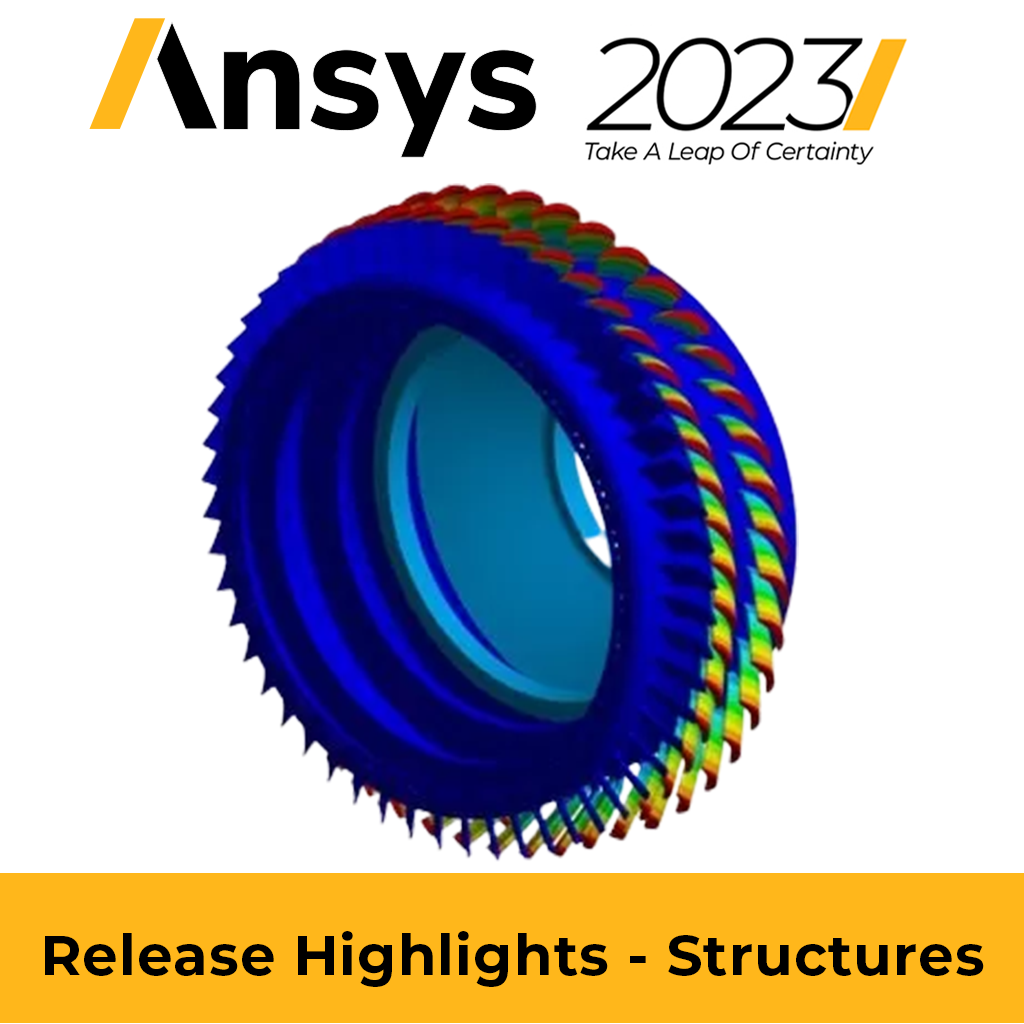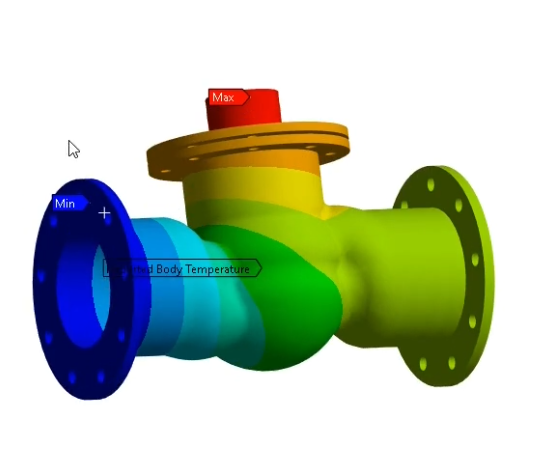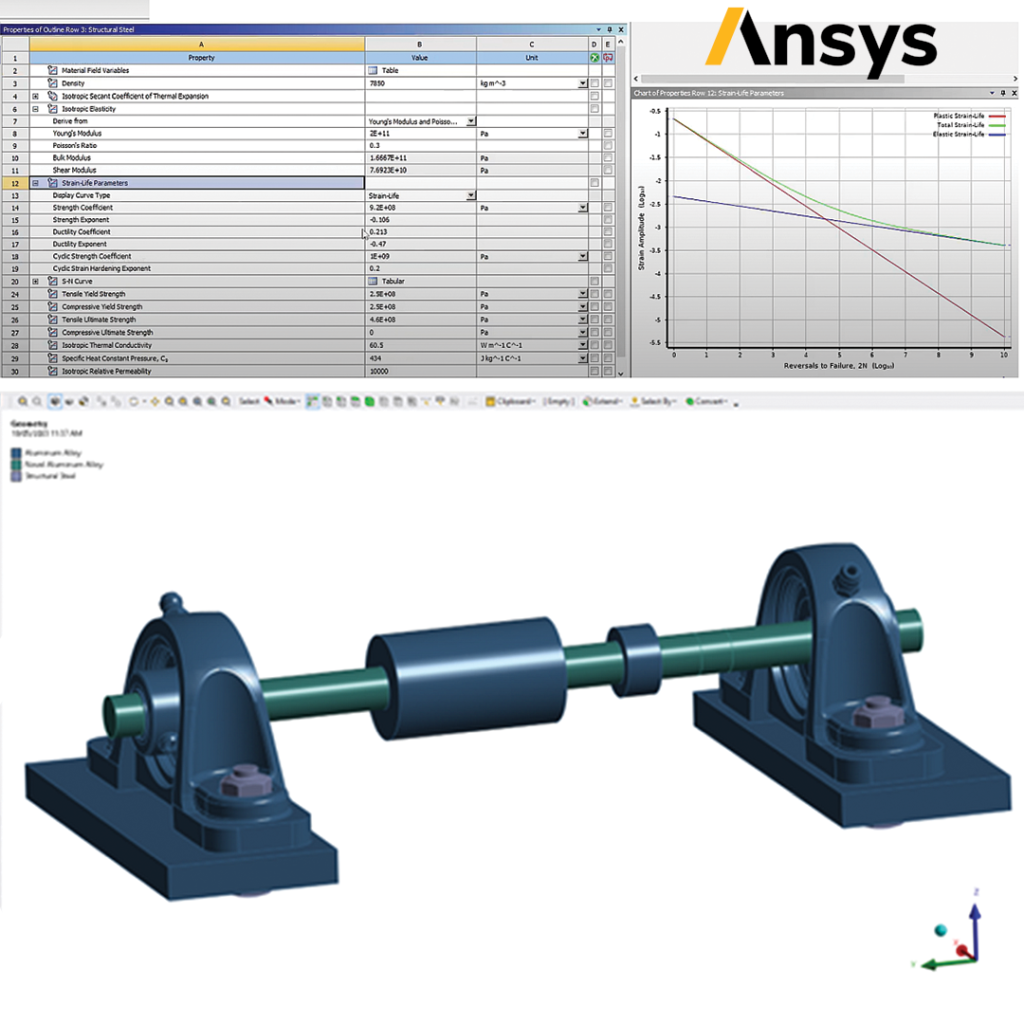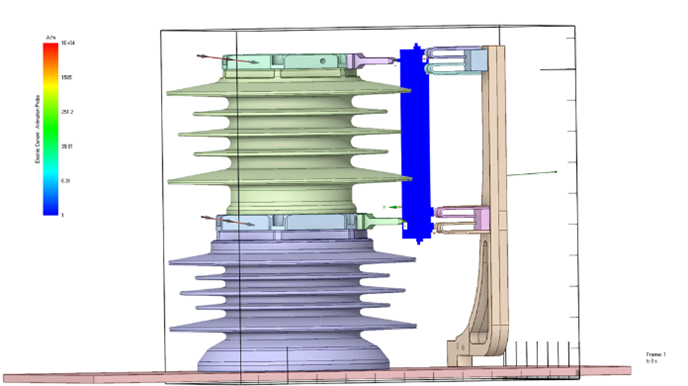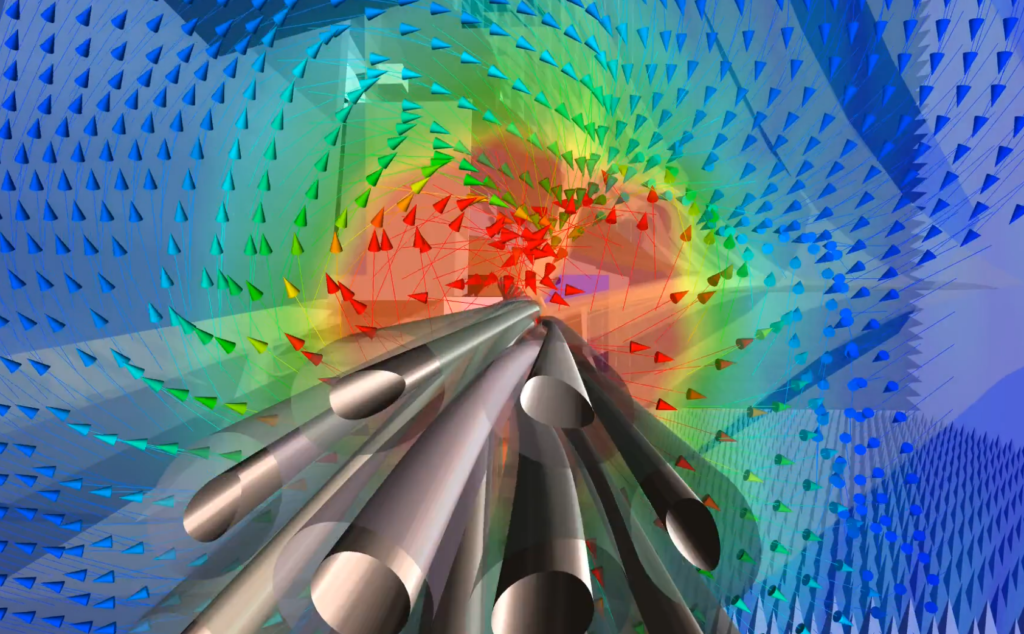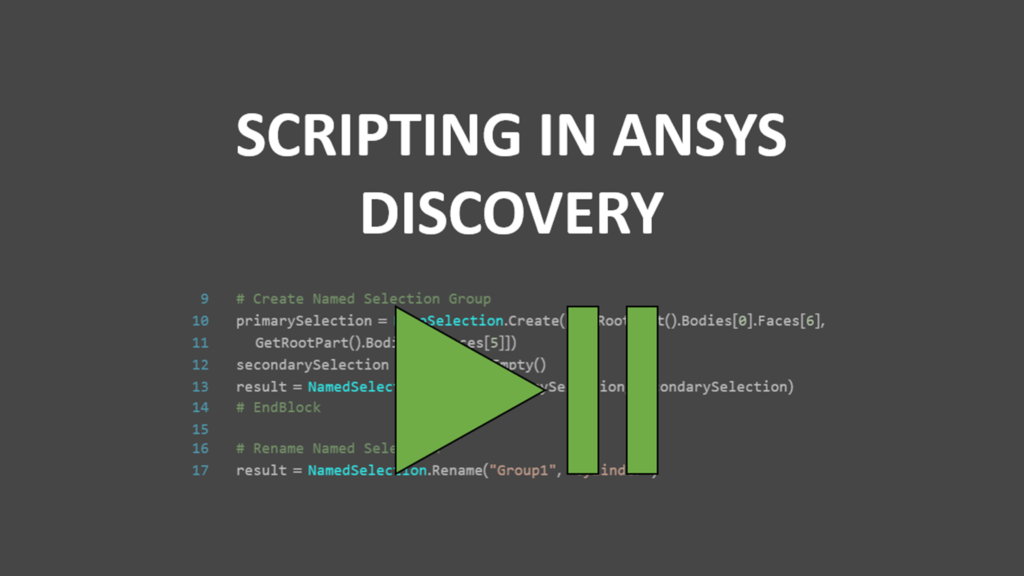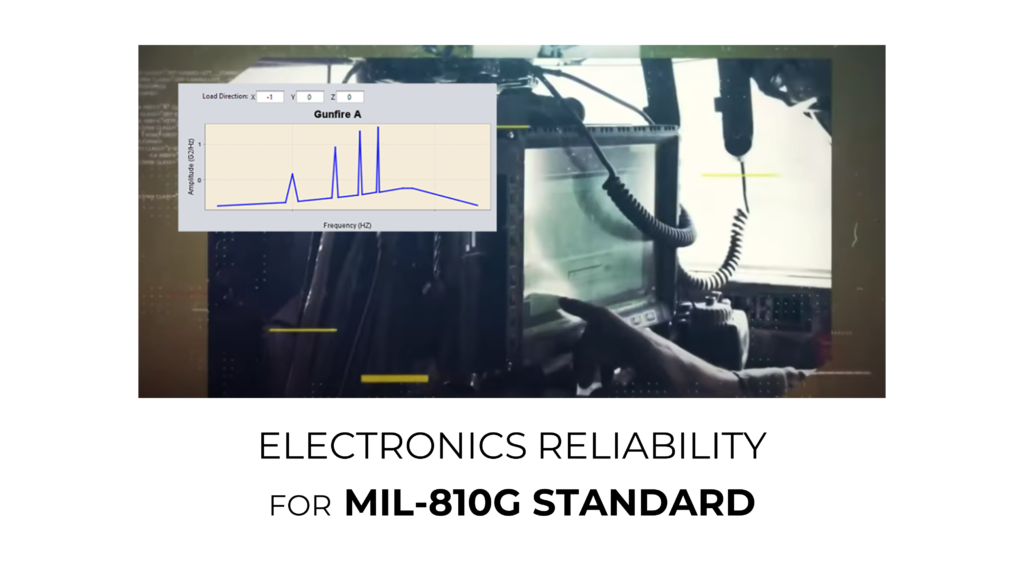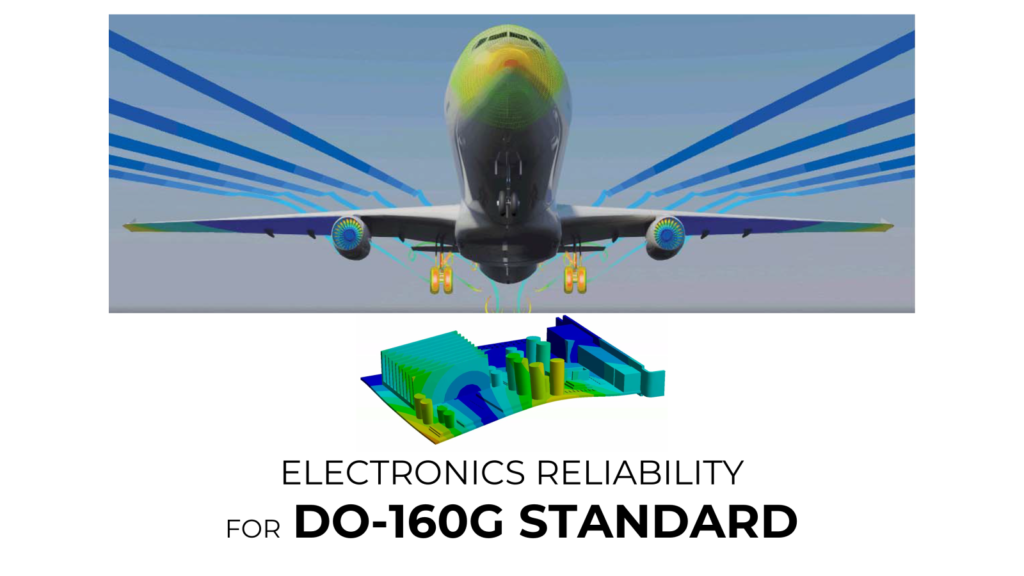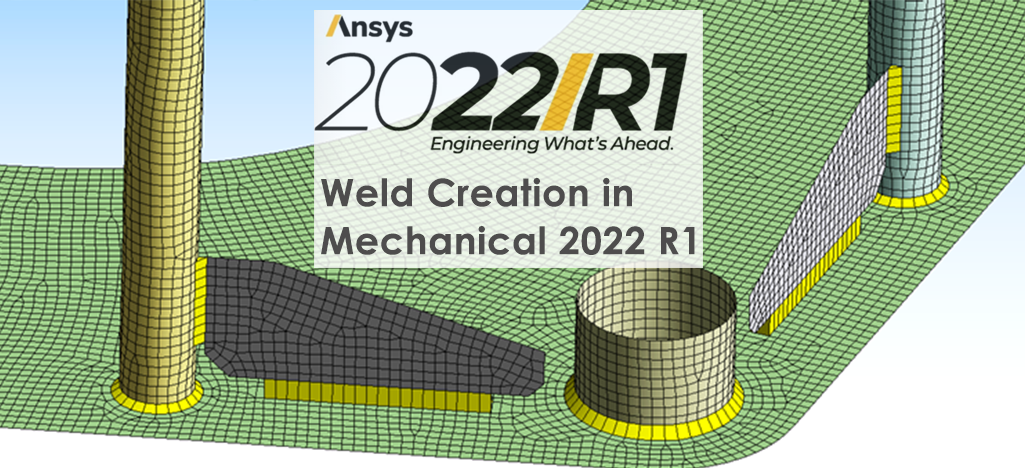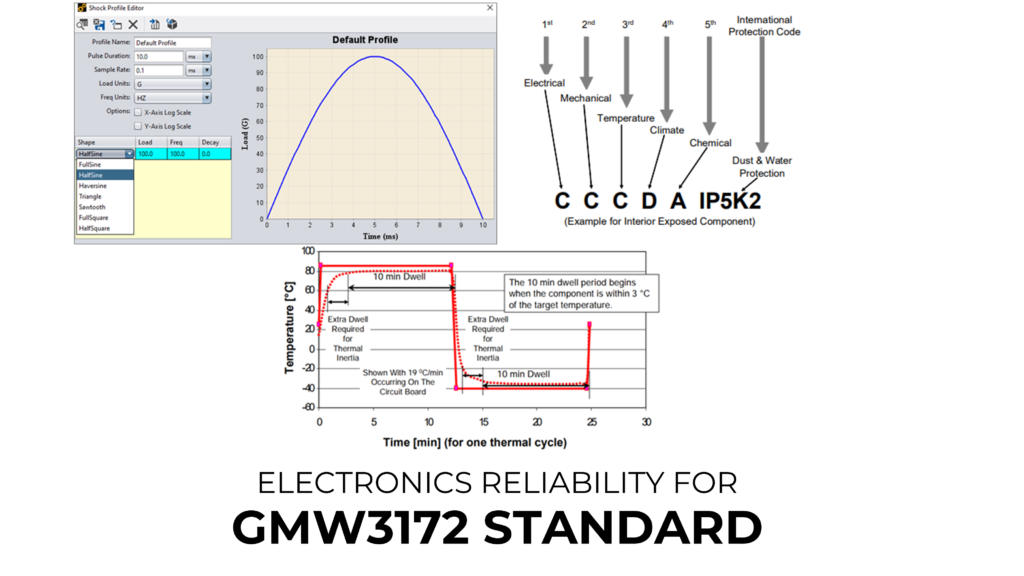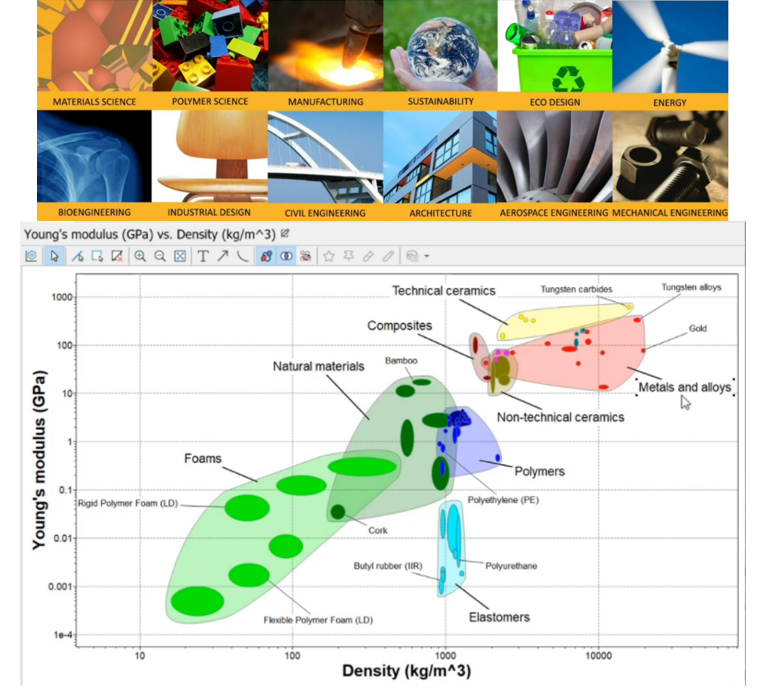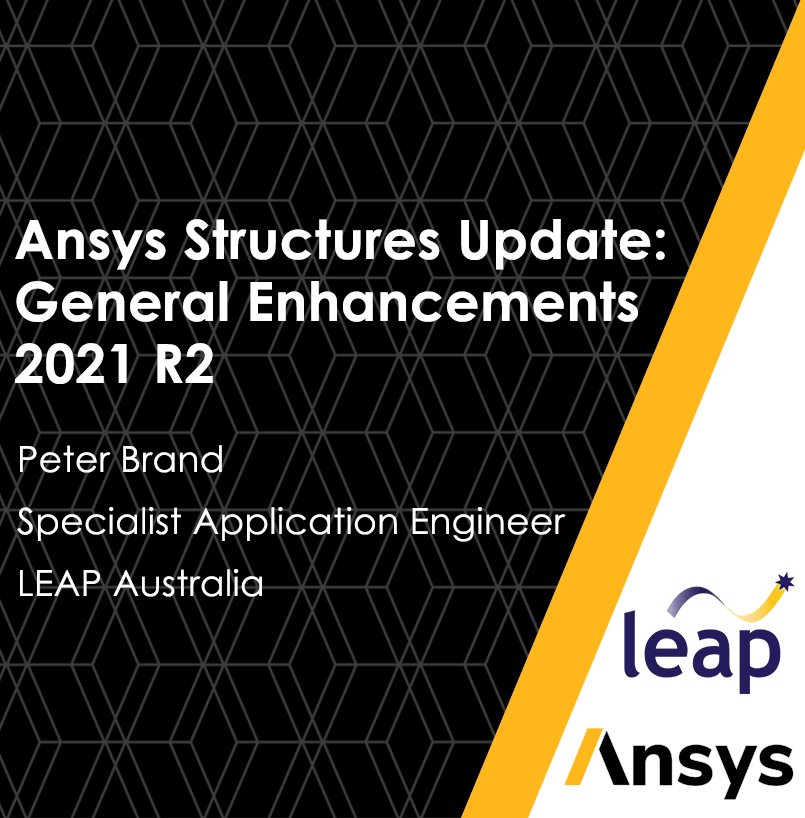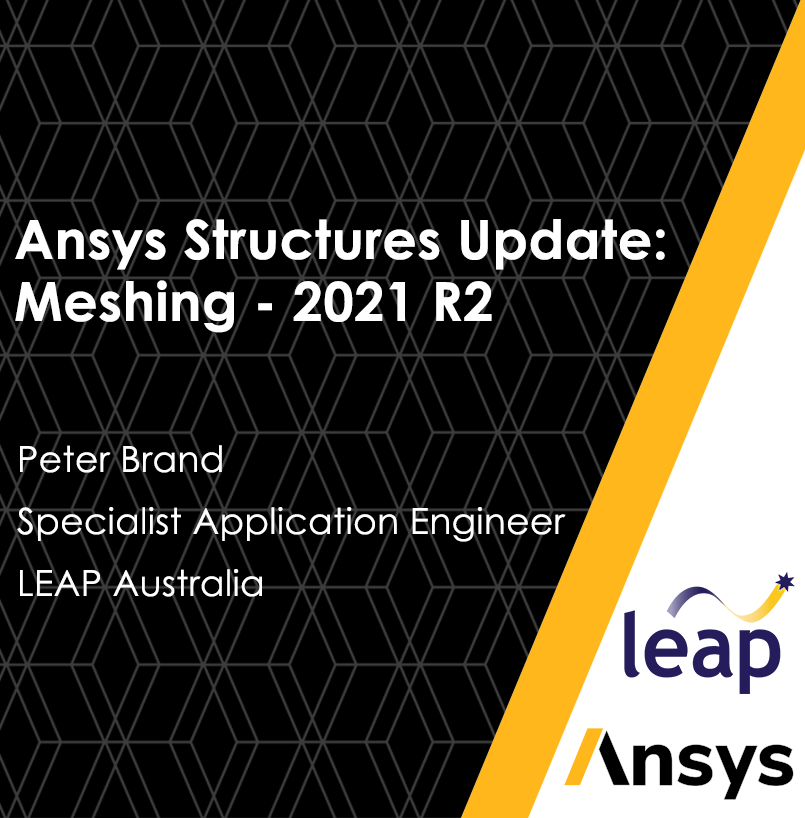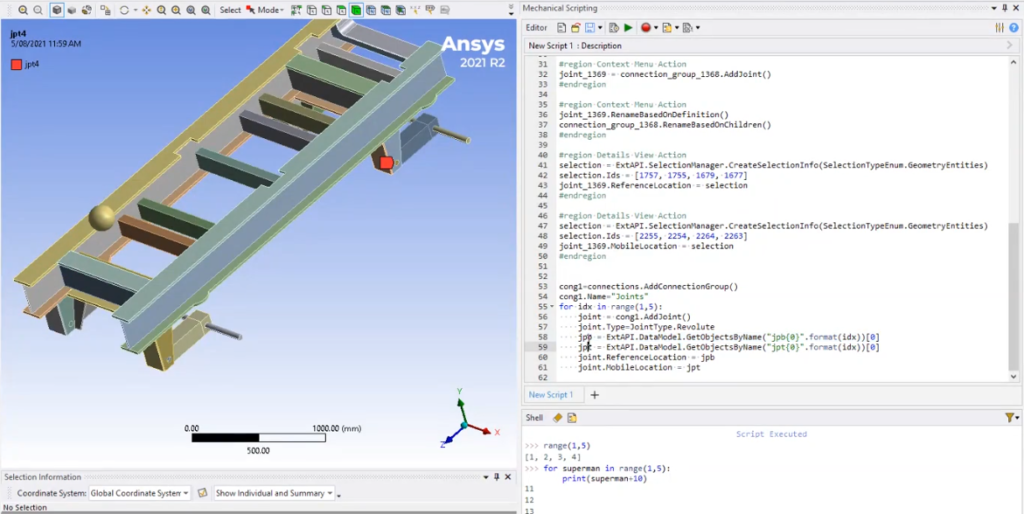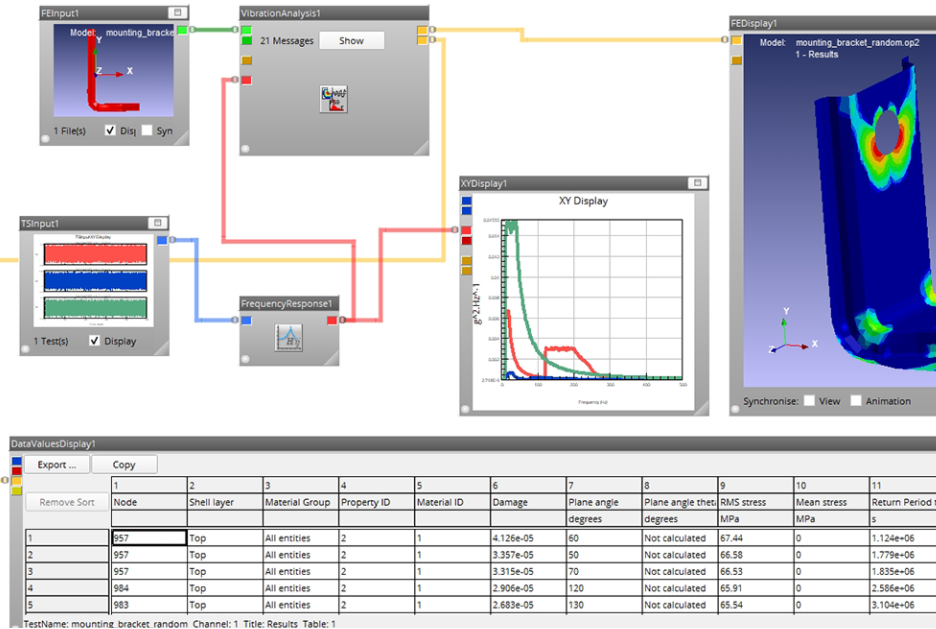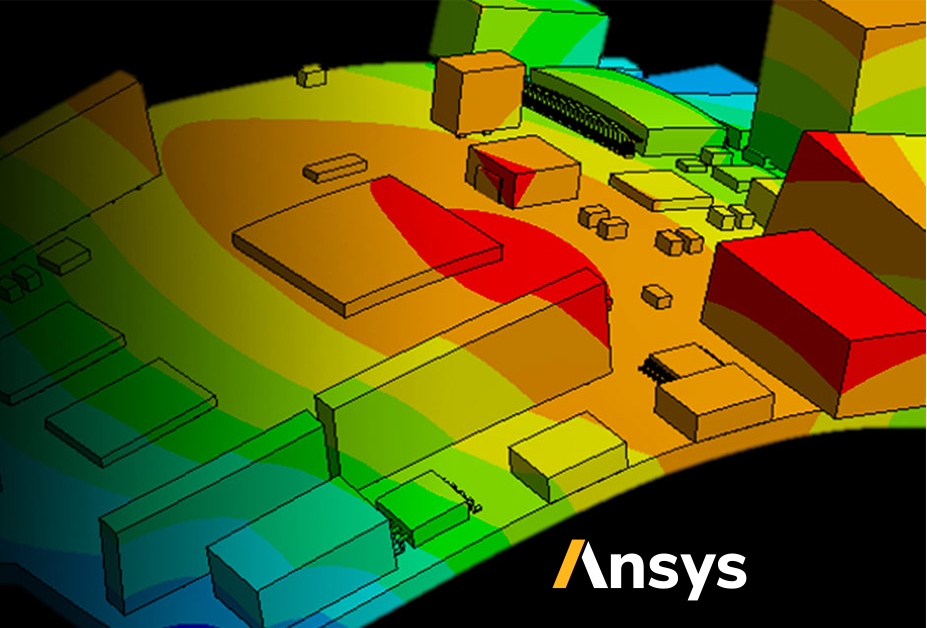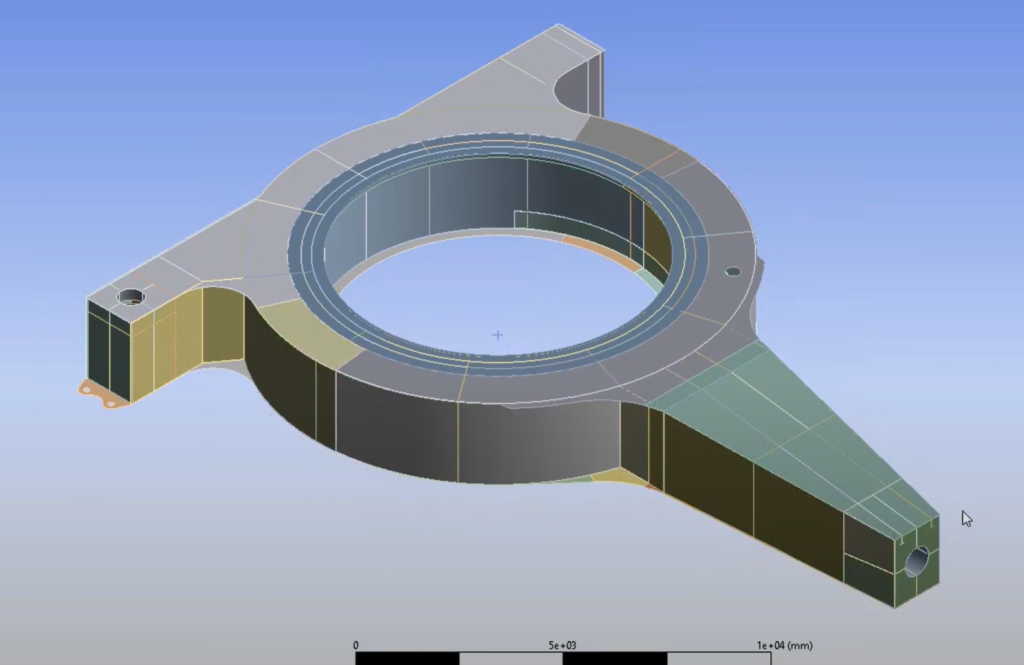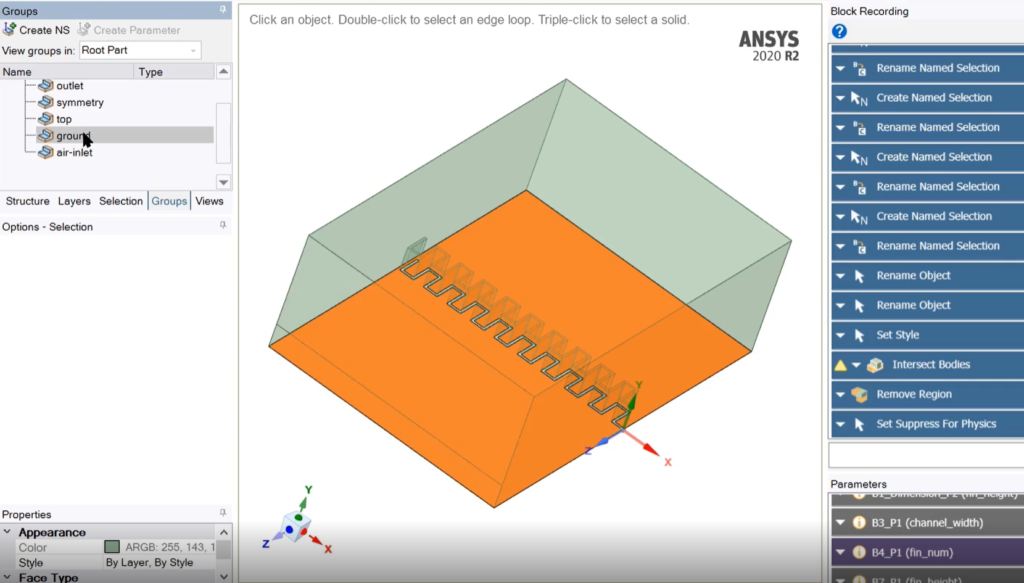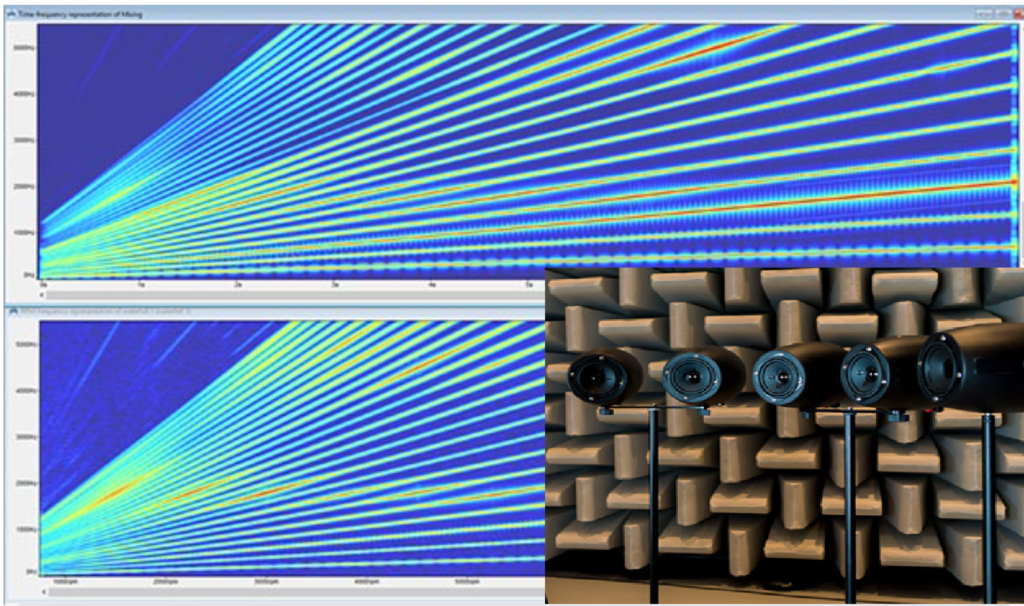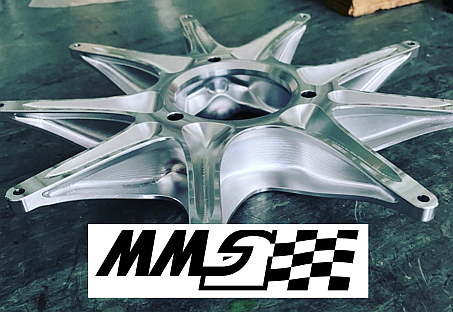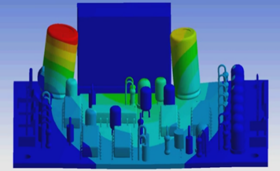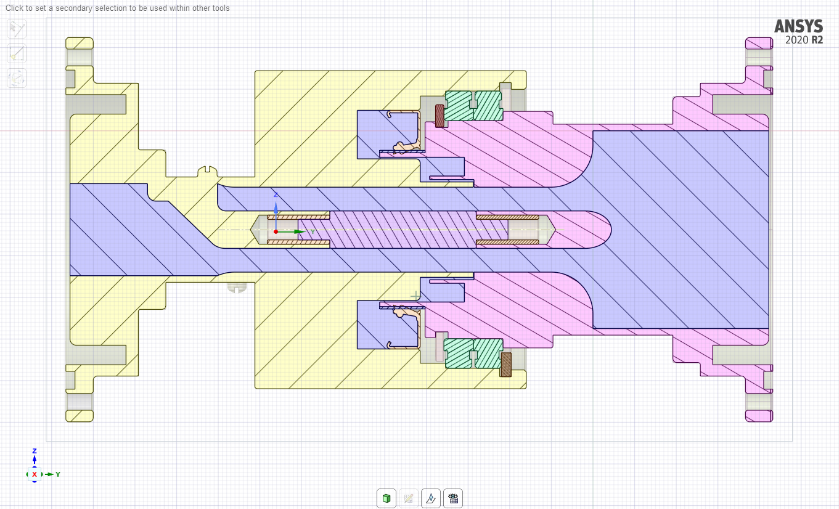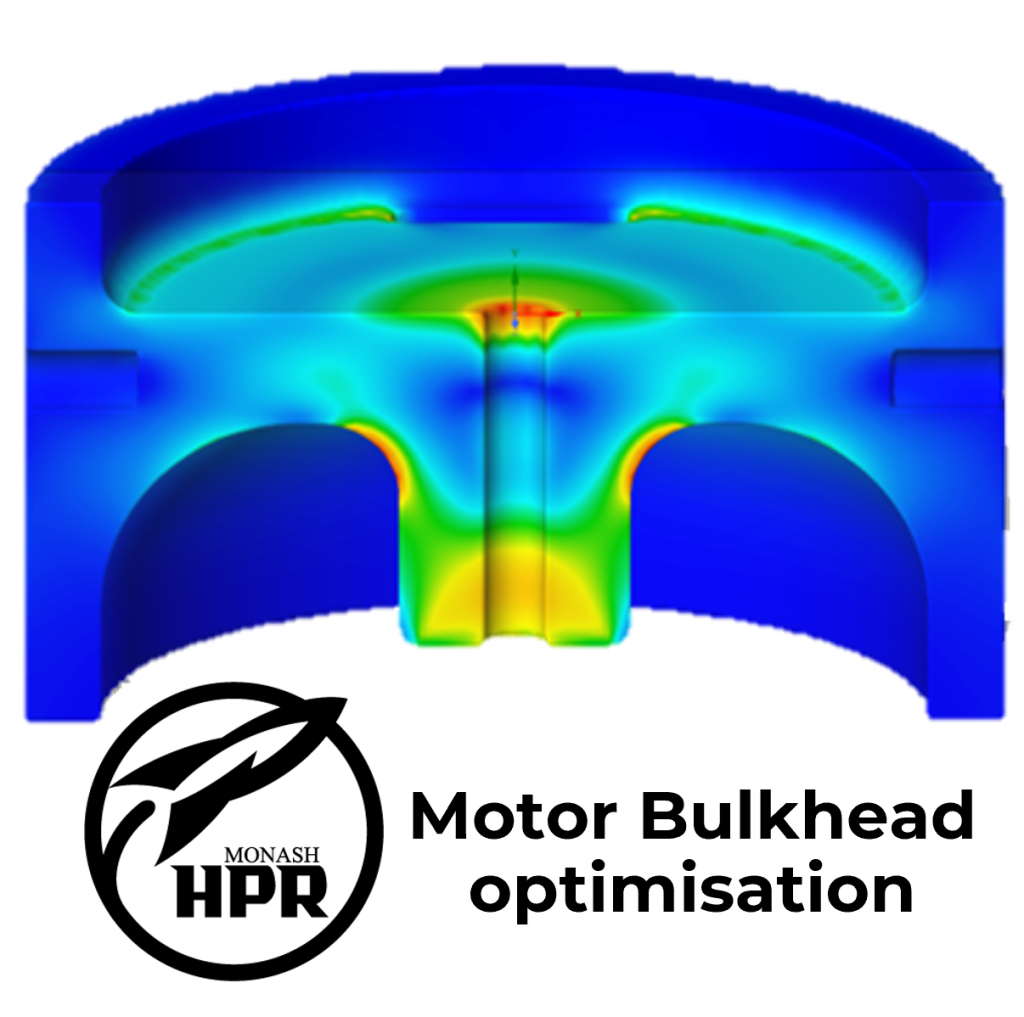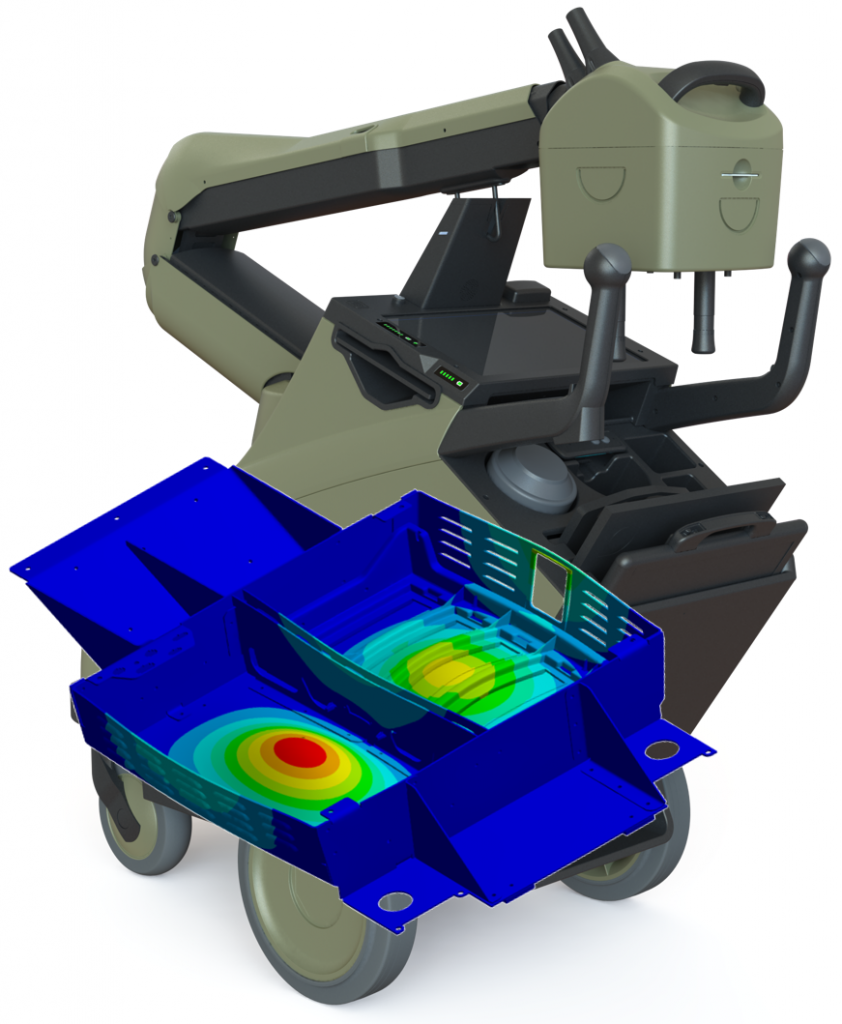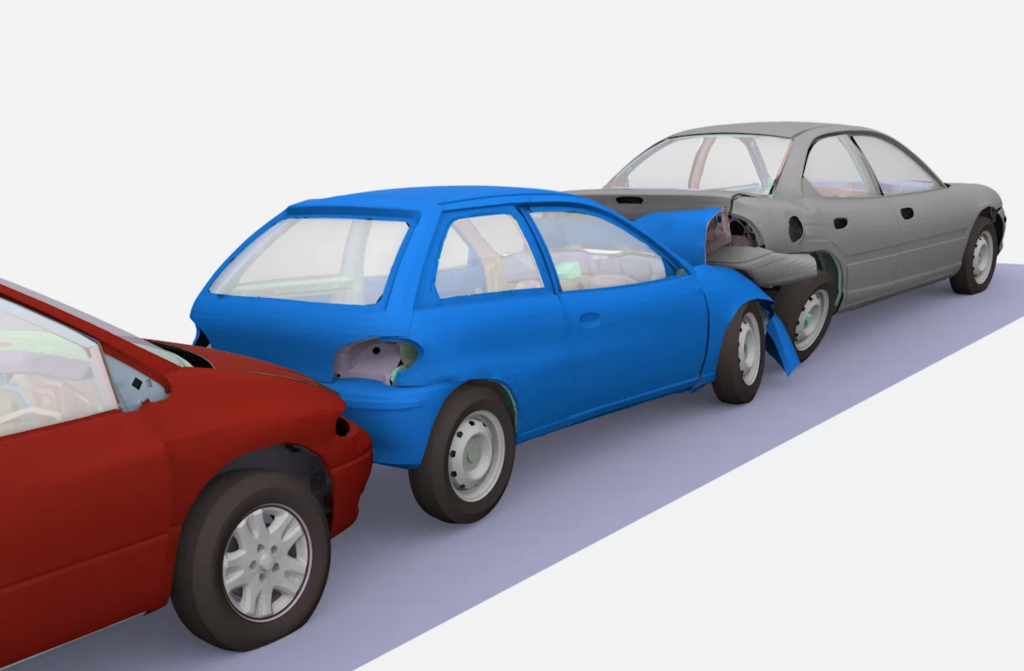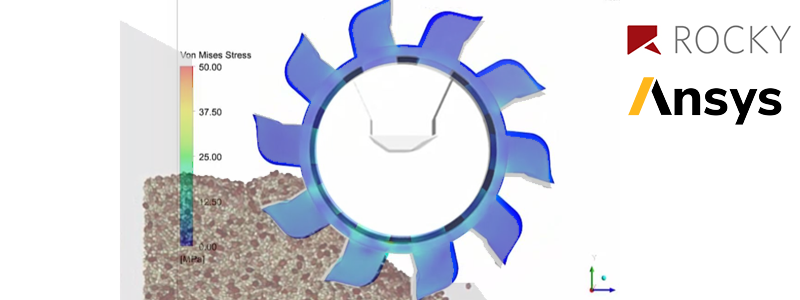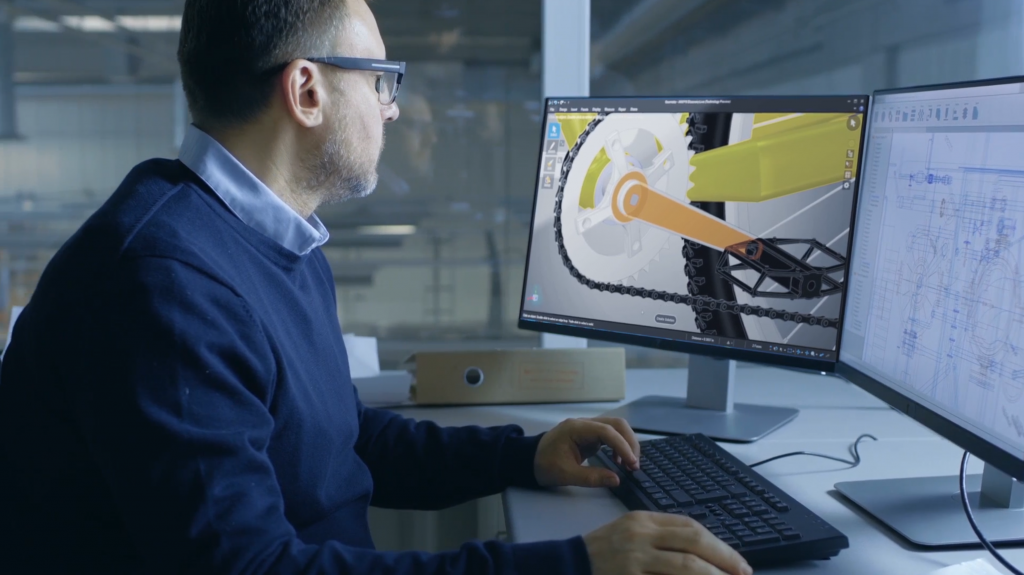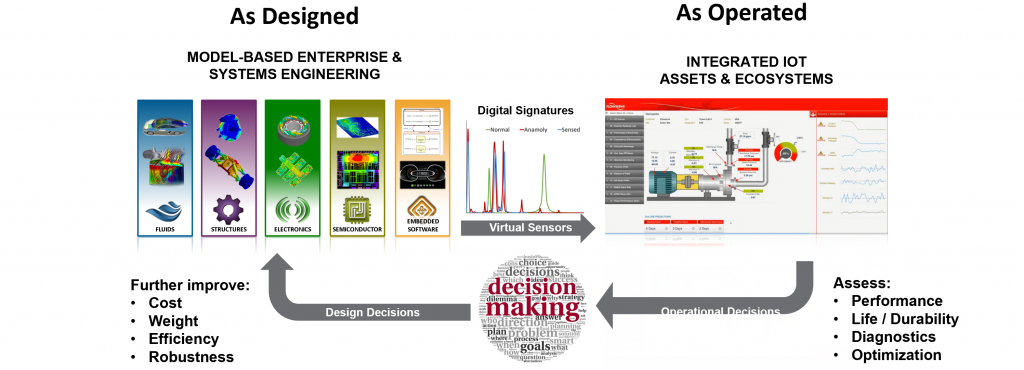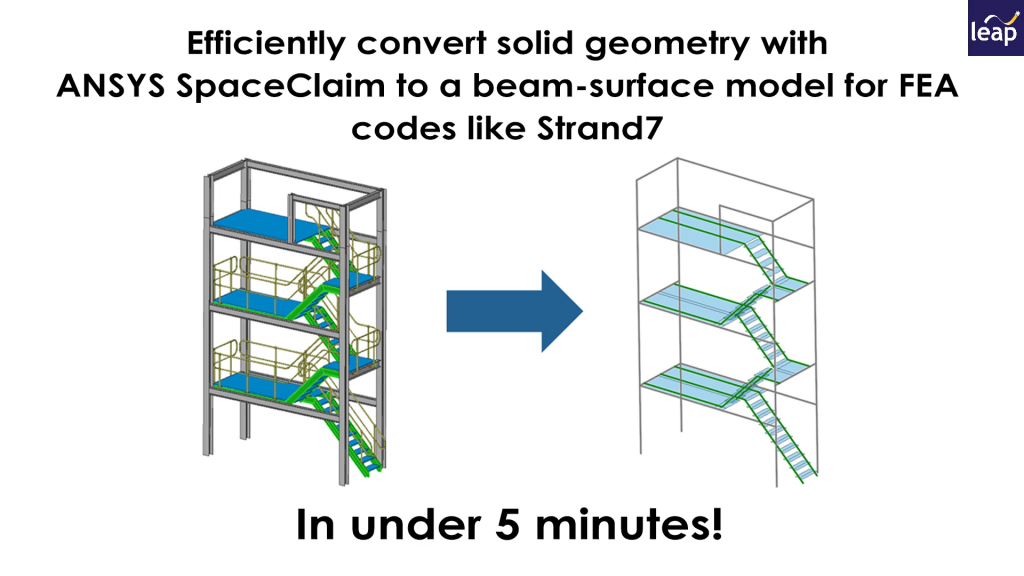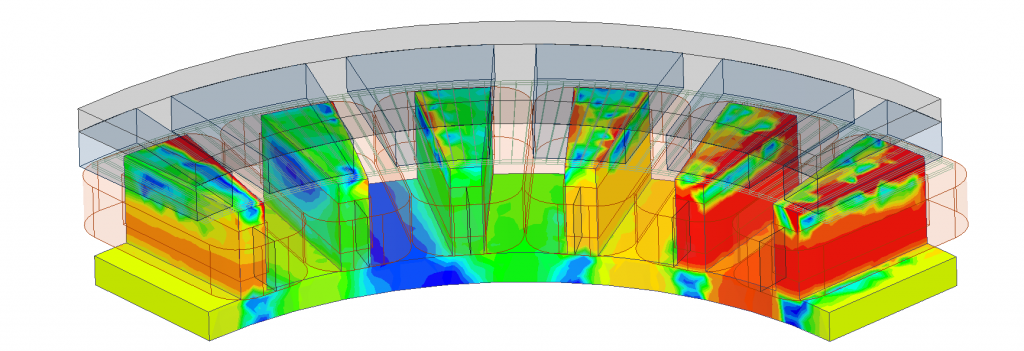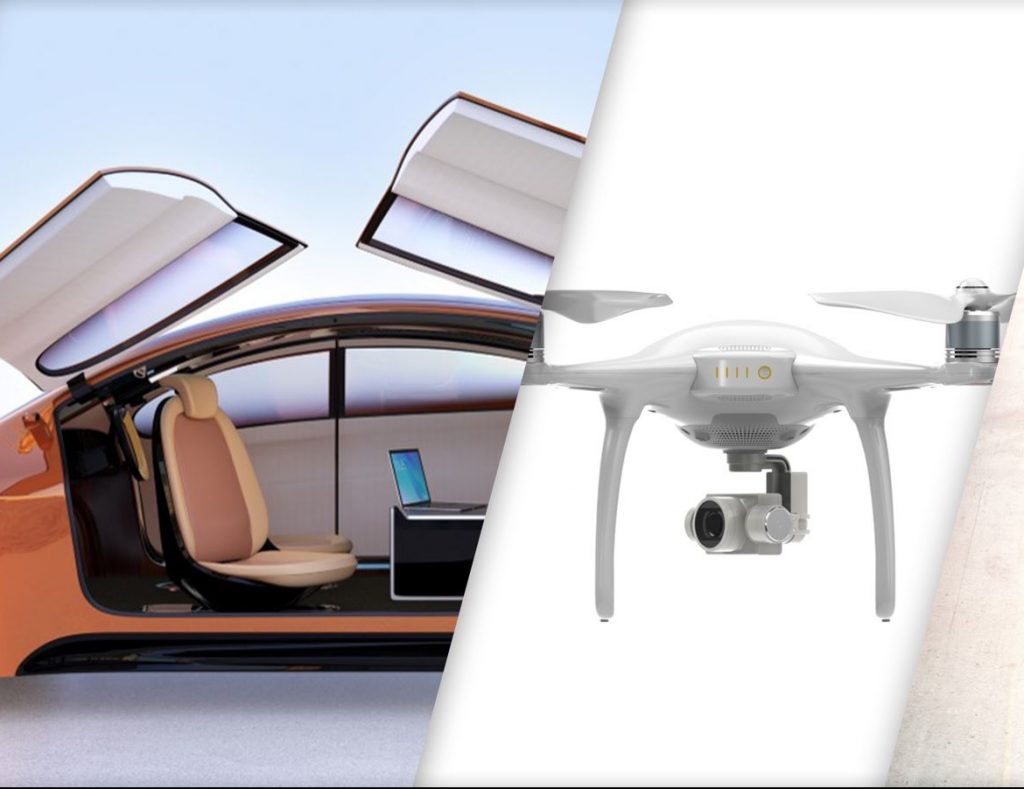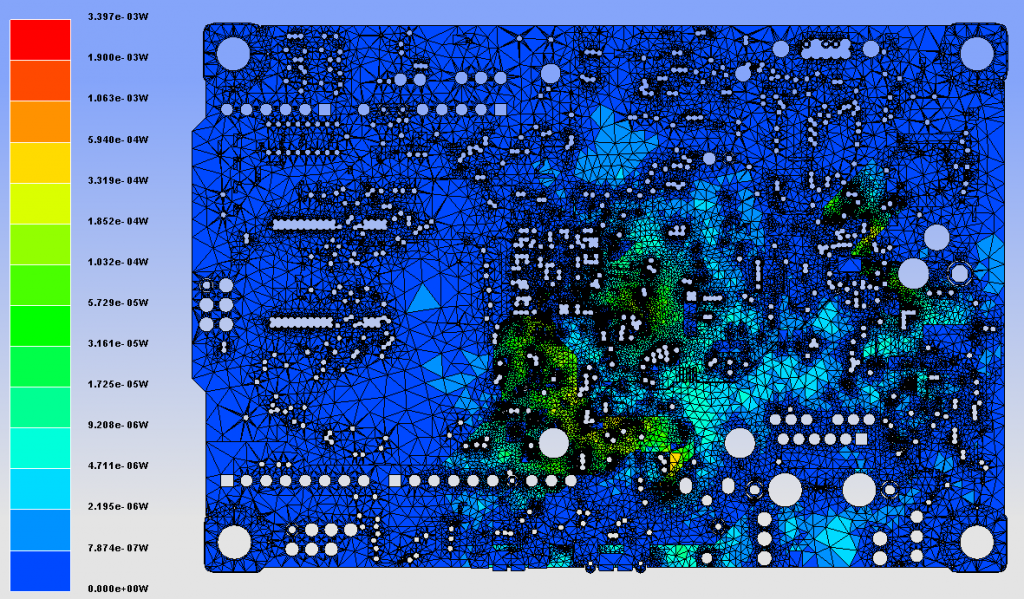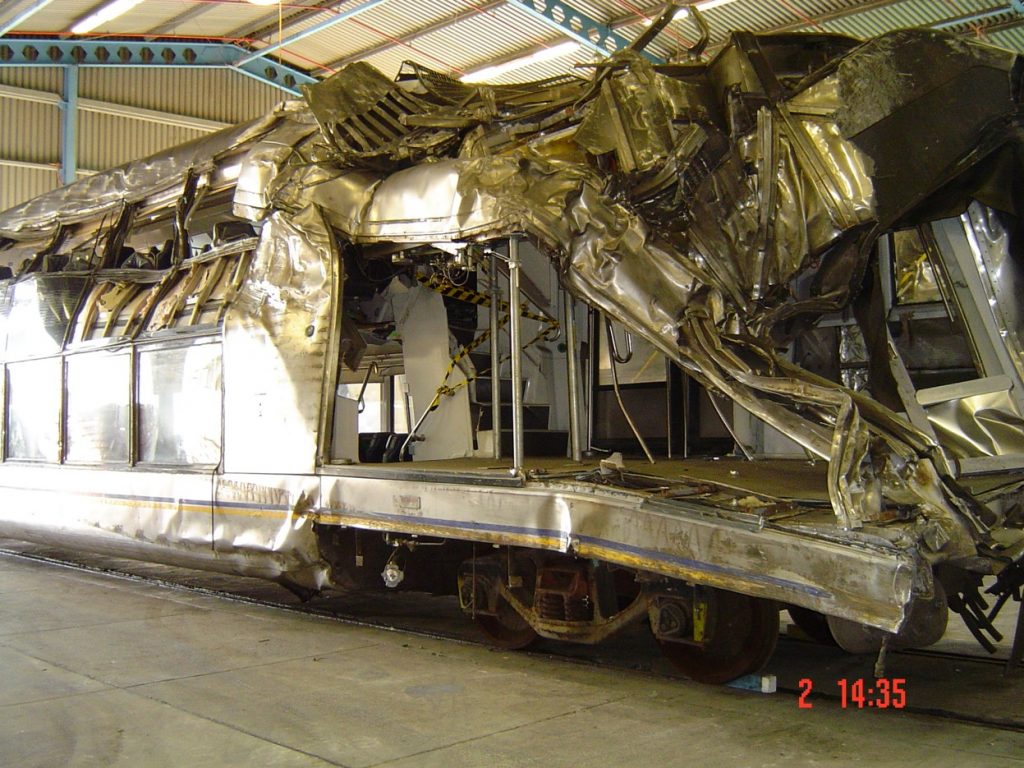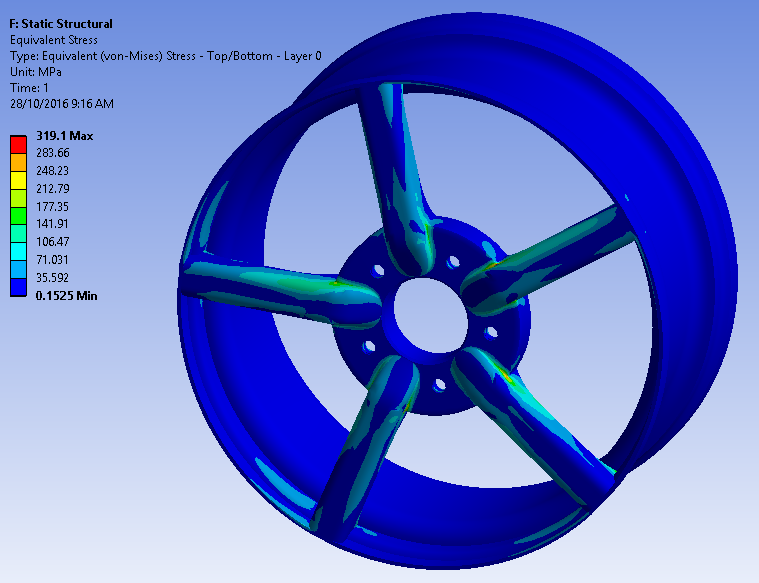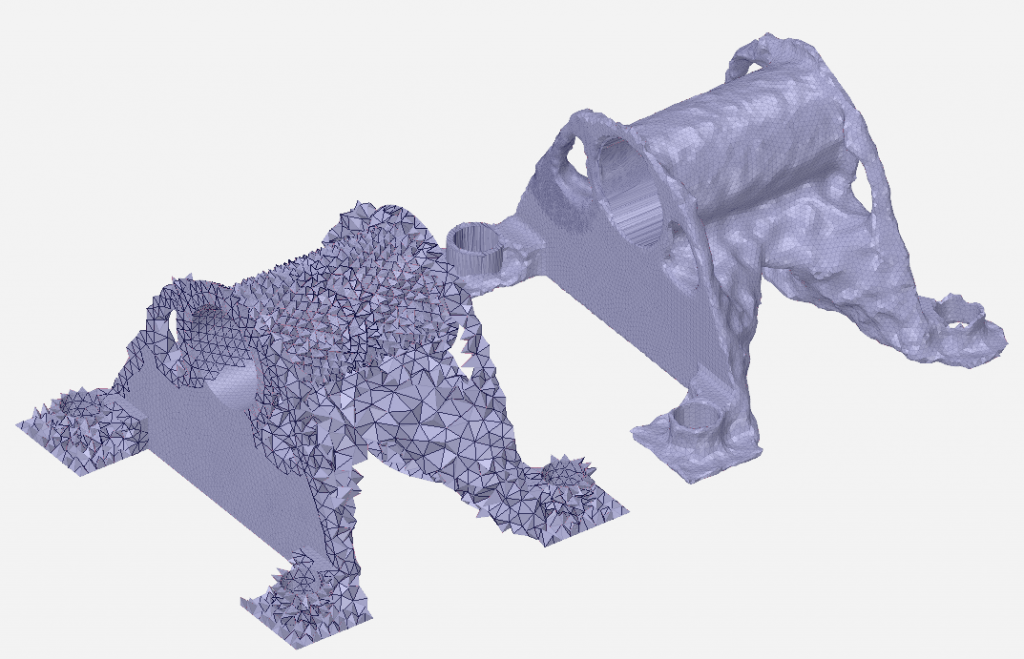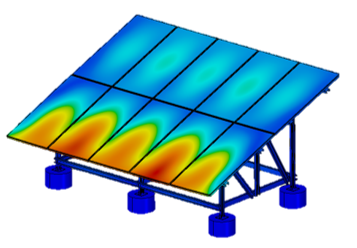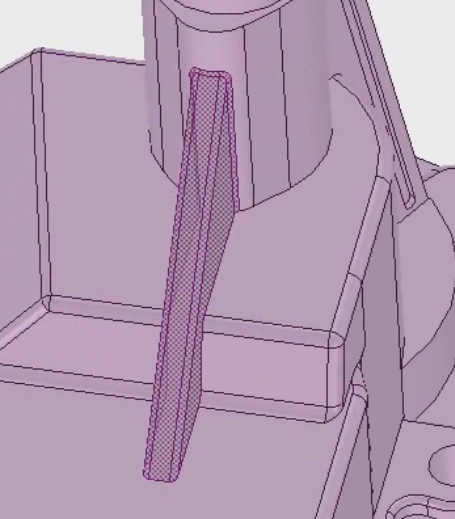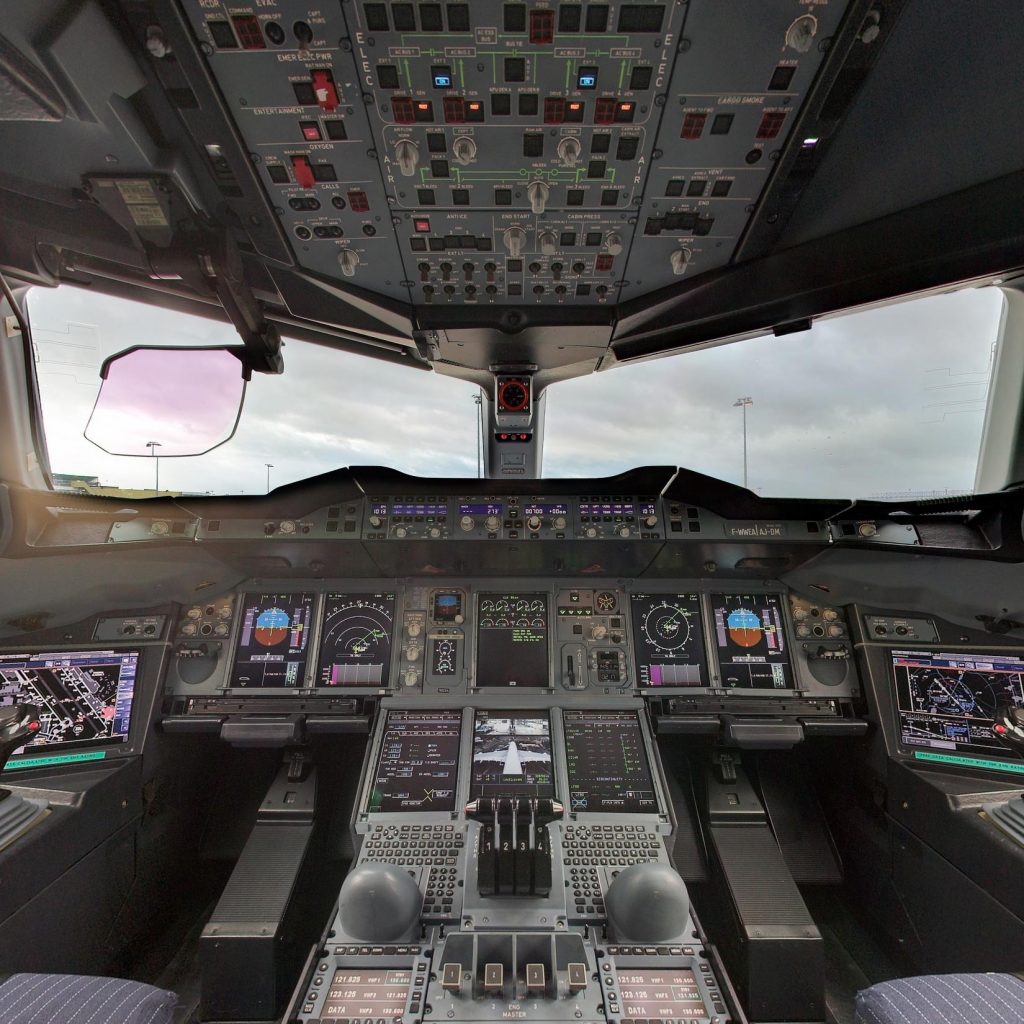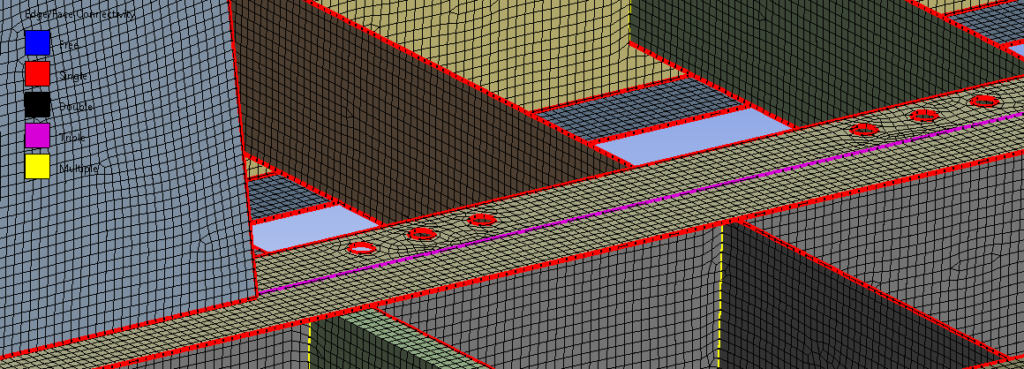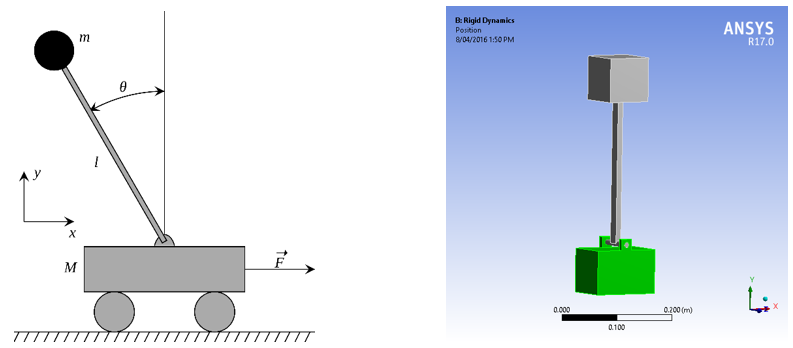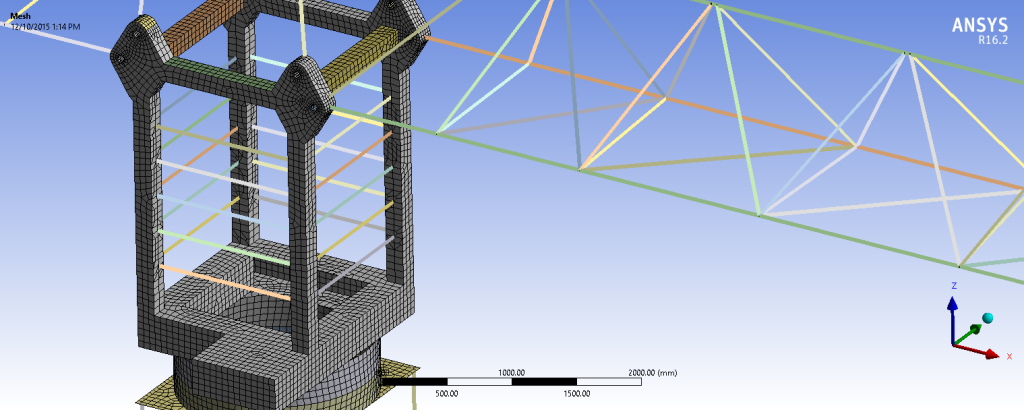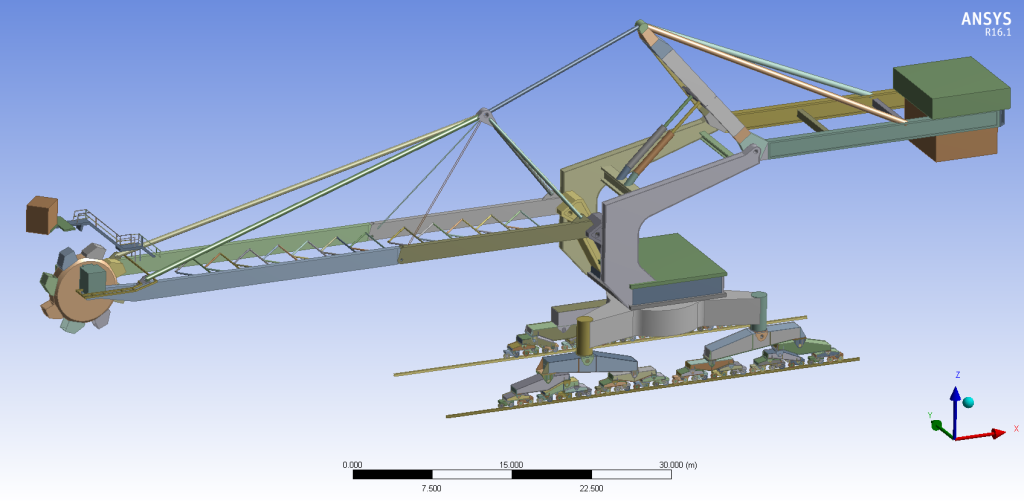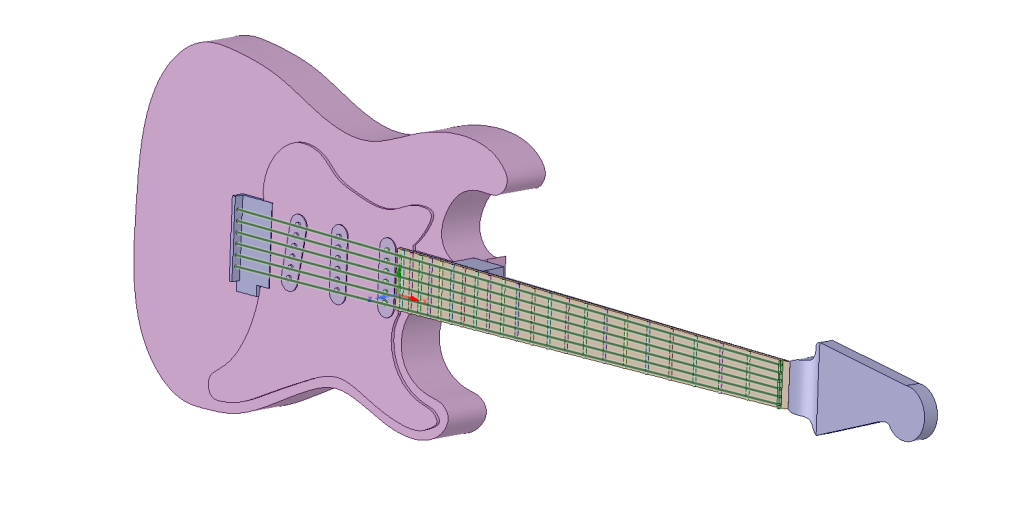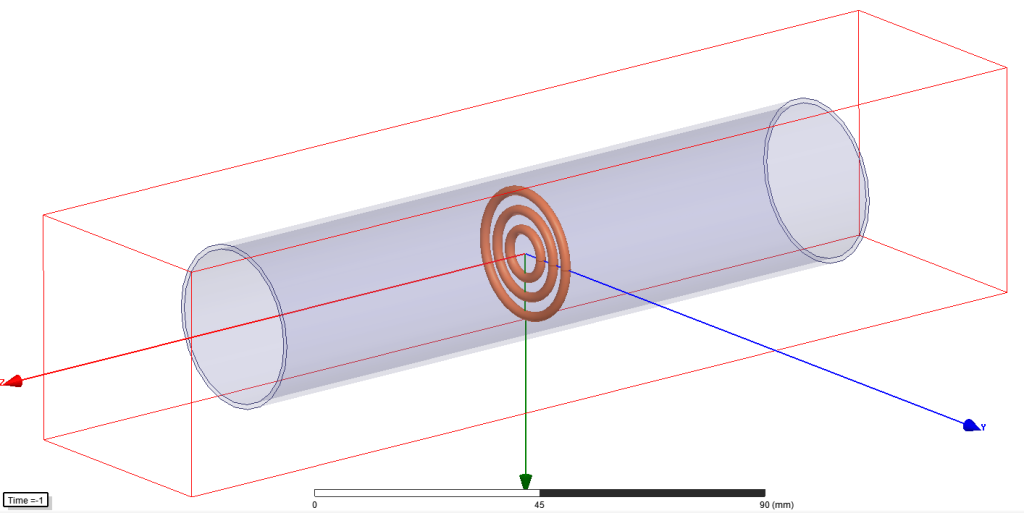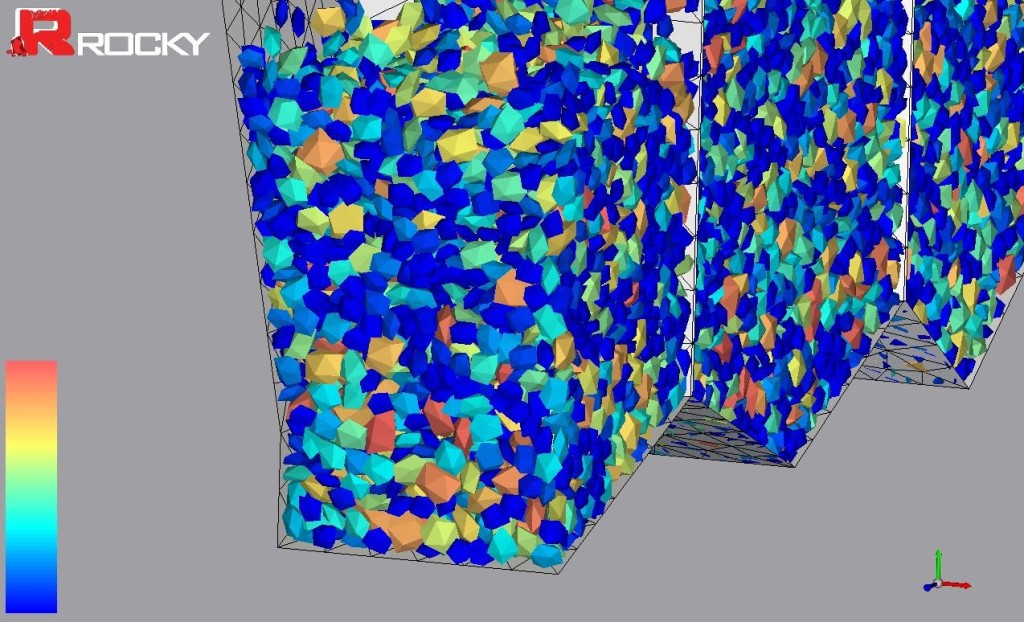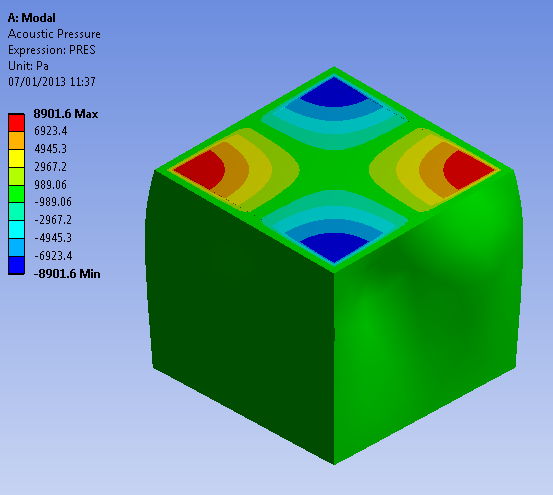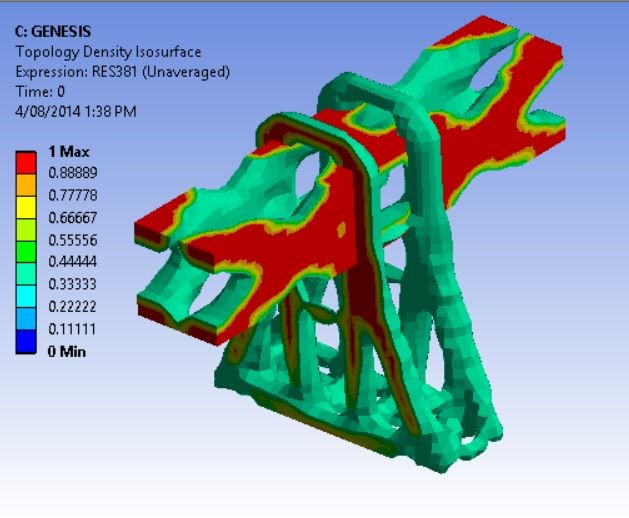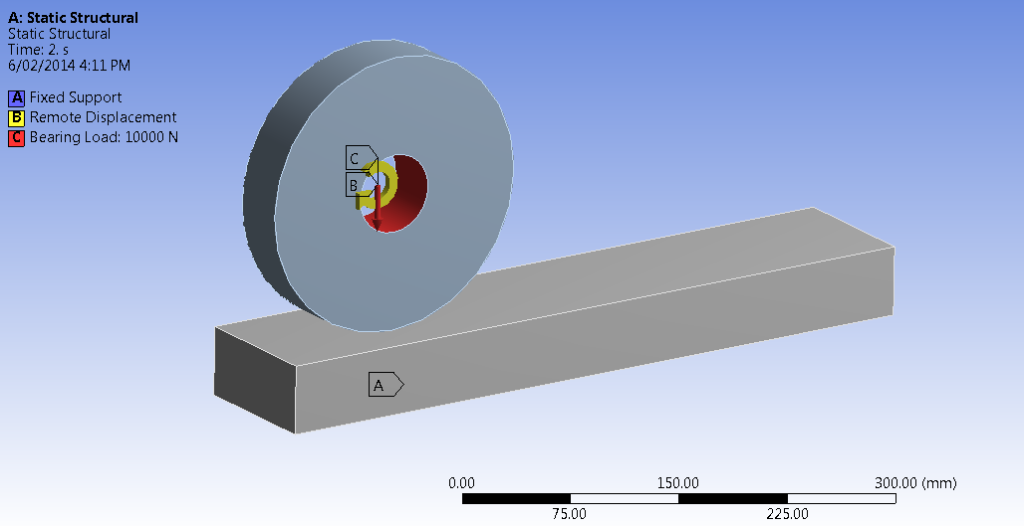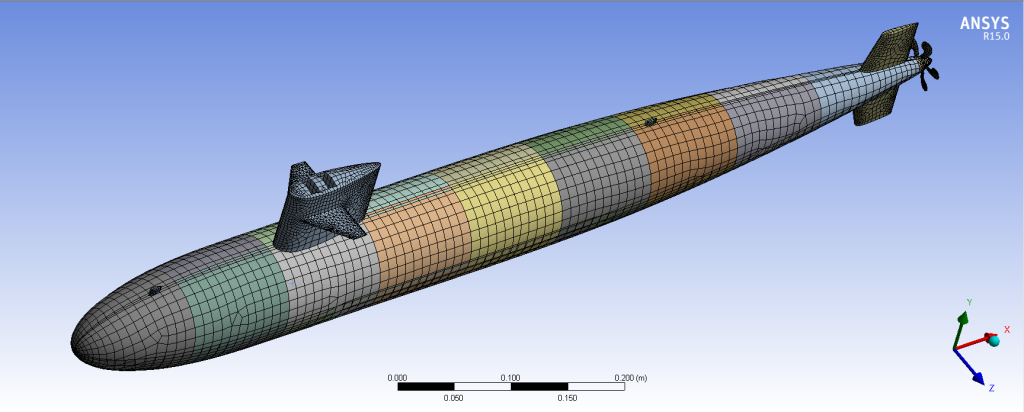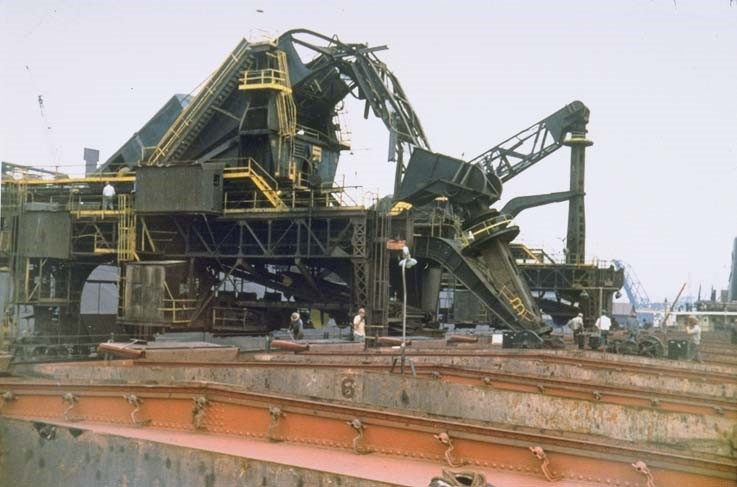
How will AI impact the role of engineers in 2023 and beyond? We asked OpenAI’s ChatGPT!
The internet is abuzz with excitement about ChatGPT, the new AI chatbot that allows you to interact with one of the world’s largest and most powerful AI models. Recent media coverage has ranged across the spectrum from hype to nope, but at LEAP we wanted to investigate further so we decided to go straight to the source – so we posed a series of questions directly to ChatGPT!
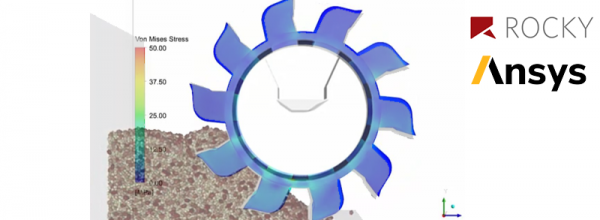
Integration of Rocky DEM + Ansys Mechanical
Rocky is a powerful, 3D DEM program that quickly and accurately simulates particle behaviour within bulk materials handling systems used across a variety of industries...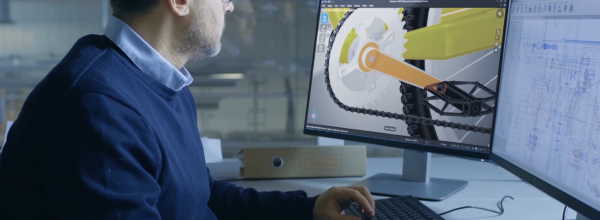
Helpful Tips for working remotely with ANSYS software
In these unprecedented times with many working from home due to the global COVID-19 pandemic, our team at LEAP Australia has put together some tips to help you continue using Ansys FEA software while working remotely.
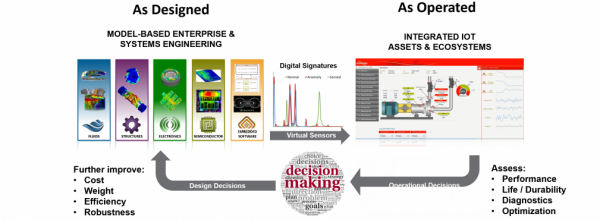
A working example of a Simulation-enabled Digital Twin
Is your company developing a Digital Twin strategy? LEAP’s engineers have created working examples of a Simulation-based Digital Twin in action – a real-time, virtual replica of your equipment constantly updated through IoT data that provides you with:
– insight into real-time performance using extra Virtual Sensor outputs
– data to assess machine health & identify possible failure conditions
– actionable data to enable predictive maintenance & avoid costly downtime.
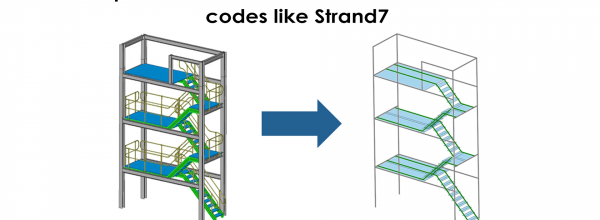
Q&A with a LEAP Expert: Why do people use SpaceClaim to prepare CAD for simulation?
We recently sat down for a quick interview with Peter Brand, Specialist Application Engineer at LEAP to find out more about his experiences from showcasing SpaceClaim to a range of engineers from different industries across Australia & New Zealand.
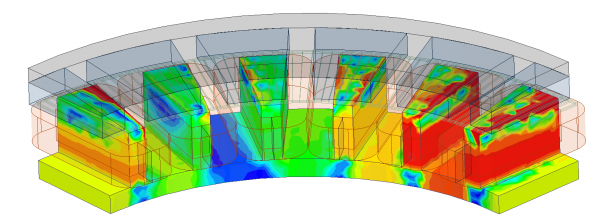
Guest Blog: Using Ansys Maxwell for Motor Design in Formula Student Competition
The Formula Student competition challenges engineering students from around the world to design, manufacture, market and race a small, open wheeled formula style racer. Since...
What have engineers learned about Fluid-Structure Interaction from the Tacoma Narrows bridge collapse?
This week marks the anniversary of the famous collapse of the Tacoma Narrows Bridge on Nov 7, 1940 - just 4 months after it was...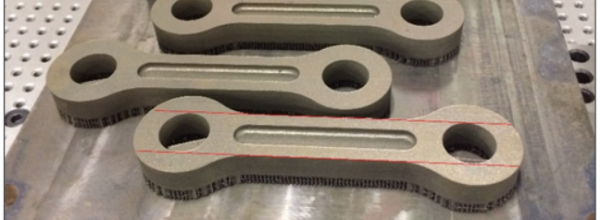
Simulation & Additive Manufacturing: letting all your wildest (product design) dreams come true in front of your eyes
At LEAP we have been tracking the development of additive manufacturing (AM, aka 3D printing) very closely for the past decade, and we have no...Guest Blog: Designing optimal wear liners with Ansys Rocky
This guest blog by Dr Daniel Grasser, Consulting Engineer at TUNRA Bulk Solids, Australia provides detailed insight into his DEM studies into reducing wear in bulk materials handling equipment during his affiliation with the ARC Training Centre in Alloy Innovation for Mining Efficiency (mineAlloy) at Deakin University. Learn how Dr Grasser utilised Ansys Rocky to better understand particle flow to improve and optimise the design of wear liners while reducing the need for experimental testing.
Lumerical Tips and Tricks #1 – Automation of Lumerical Tools with Python
In the first of our Lumerical tips and tricks series, we look at new scripting capabilities in Ansys Lumerical using Python which offers users a more streamlined and more automated approach and a faster way to consider a full range of variables related to geometry, mesh, and solver components.
Ansys 2023 Release Highlights – Structures
Recording from LEAP’s recent series of Ansys 2023 R1 & R2 update seminars covering the latest updates in Ansys Structures & Explicit Dynamics. Thes videos are from our Melbourne event, presented by Dr. Luke Mosse, Senior Application Engineer at LEAP Australia.
Optomechanical Design of a Tophat Beam Shaper with Ansys Zemax OpticStudio
How can simulation help you to arrive at an optomechanical design that will generate the required output laser cutter beam while remaining robust under the expected thermal and structural deformations caused by the laser source?
Mastering Structural Analysis: Integrating External Loads into Ansys Mechanical
Modern engineers often work on the design of increasingly complex systems that will experience a multitude of simultaneous loading factors – such as forces, thermal effects, and pressure. Ansys Workbench offers a range of options to streamline the process of incorporating these external loads into Ansys Mechanical so that Ansys users can accurately predict stress, strain and fatigue life for such complex systems with greater precision.
Fast-tracking the development of autonomous vehicles, drones and robots via engineering simulation
Designers of autonomous vehicles, drones & robots face key safety and reliability challenges when integrating machine vision & complex sensors. Engineering simulation tools can form part of a complete control loop for autonomous systems, helping to replicate the real world performance of sensors in a consistent and repeatable virtual test environment and leading engineers to solve issues before they become a problem in real life.
Making Informed Material Selections in Ansys Mechanical
Material selection affects the behaviour, performance, and durability of a product. This blog explores material selection options and how to speed up this process in Ansys Mechanical using the comprehensive material database and tools to evaluate and compare the material behaviour.
Switchgear Pre-Compliance Simulations
How to use simulation to ensure switchgear functions to standards such as IEC 61439, incorporating effects such as: short circuit withstand strength, degree of protection of enclosures (arc fault), temperature rise, clearances and creepage distances, Dielectric properties of insulation, electromagnetic compatibility EMC.
Preventing Electronics Failure due to Electrostatic Discharge (ESD)
This blog offers a detailed overview of the workflow to conduct virtual testing of Electrostatic Discharge using Ansys EMA3D – as early as possible in your design cycle once your PCB design is available – helping to reduce expensive recalls and warranty issues due to ESD failures in sensitive electronics.
New opportunities for EMC simulation of large platforms with Ansys EMA3D
Learn about Ansys EMA3D to account for cables and cable assemblies when accurately simulating EMI/EMC effects on larger platforms, such as aircraft and full vehicles.
How will AI impact the role of engineers in 2023 and beyond? We asked OpenAI’s ChatGPT!
The internet is abuzz with excitement about ChatGPT, the new AI chatbot that allows you to interact with one of the world’s largest and most powerful AI models. Recent media coverage has ranged across the spectrum from hype to nope, but at LEAP we wanted to investigate further so we decided to go straight to the source – so we posed a series of questions directly to ChatGPT!
Scripting in Ansys Discovery: Automating repetitive tasks and complex workflows
Learn from our video series on how to use scripting in Ansys Discovery to automate repetitive tasks and complex workflows across a broad range of applications. These videos aim to help Ansys Discovery users to learn the scripting interface, work through some useful examples and adapt scripting methods to their own needs.
What’s new in Ansys for universities and academic researchers?
Highlights from a recent webinar by LEAP’s expert simulation team covering the most significant updates in Ansys for educators and academic researchers in ANZ – with a focus on Structures, Fluids and Electromagnetics across the last 2-3 years.
Reliability Physics Analysis Tools for Implementing MIL-810G STANDARD
In the final part of our series on using Electronics Reliability simulation tools to meet important industry standards, read how to apply Reliability Physics Analysis (RPA) in Ansys Sherlock to meet the MIL-STD-810G standard relating to environmental and lab tests approved for use by the US Department of Defence.
Reliability Physics Analysis Tools for Implementing DO-160G STANDARD
Read how to apply Reliability Physics Analysis (RPA) in Ansys Sherlock to the DO-160G standard which covers “Environmental Conditions and Test Procedures for Airborne Equipment” in the aerospace industry. PCBs installed in any airborne vehicles can be simulated in Ansys Sherlock to assess the vibrational and solder fatigue analysis in order to predict the life cycle/ Time-to-failure (TTF) of key components and the board itself.
Material Calibration Wizard in Rocky 2022 R1
Calibration is a crucial step in DEM to ensure that the virtual materials accurately represent real particles. Further, every bulk material is unique and unlike...
Weld Creation in Ansys Mechanical 2022 R1
Welding is a commonly used method that plays a crucial role in the safety, structural integrity, and durability of many fabricated structures. Learn about the significant new features in Ansys Mechanical 2022 R1 which greatly aide the preparation of FEA models involving welded structures and will save you many days of model preparation time.
Reliability Physics Analysis Tools for Implementing GMW3172 STANDARD
Read how to apply Reliability Physics Analysis (RPA) in Ansys Sherlock to the GMW3172 Standard for “General Specification for Electrical/Electronic Components – Environmental/Durability”, part of engineering standards by General Motors which applies to electrical components for passenger/commercial vehicles & trucks.
Enhancing Materials Science education at the University of Auckland
The University of Auckland has been teaching materials science & engineering with Granta Edupack since 2015 as part of a commitment to use the latest technology to enhance their Materials Science education.
Read this recent interview with Dr. Josh Workman who used Granta EduPack as a Lecturer in Materials Engineering.
Reliability Physics Analysis Tools for Implementing SAE J3168 STANDARD
Read how to apply Reliability Physics Analysis (RPA) in Ansys Sherlock to the SAE J3168 standard, covering Electrical, Electronic, Electromechanical Equipment, Modules and Components. This standard was jointly developed by the SAE Automotive Electronic Systems Reliability Standards Committee and SAE Avionics Process Management Committee, and is the first reliability physics analysis (RPA) standard developed specifically for use in the Aerospace, Automotive, Defence and other High-Performance (AADHP) industries.
Part 1: Using Simulation of Electronics Reliability to address industry standards (SAE J3168, MIL-810G, GMW3172 and/or DO-160G)
It is increasingly important for product designers to consider electronics durability and PCB reliability across the product’s entire service life – accounting for all external influences that it will experience during production, shipping, and the environment during its operation. Here we look at how simulation is used to satisfy the requirements dictated by common industry standards.
LEAP’s Highlights from Ansys 2022 R1 release – Structures
Learn more about improvements in performance, usability, speed and model physics in Ansys 2022 R1 for Structures. Here we look at general FEA highlights and new features of broad interest to our customers plus a 2nd video exploring the new capabilities of the Ansys Noise, Vibration and Harshness (NVH) Toolkit.
thyssenkrupp presentation at Ansys FEA User Group: FEA for Balanced Machines
Guest post by Daniel Haasbroek, Principal Engineer Structural, thyssenkrupp industrial solutions including the recording of Daniel’s presentation at 2021 Ansys FEA User Group. Daniel has worked at thyssenkrupp for the past 14 years as a structural engineer specialising in balanced machines.
LEAP’s Highlights from Ansys 2021 R2 Structures Release – General Enhancements
Ansys 2021 R2 has arrived and in this post Peter Brand, Specialist Application Engineer at LEAP takes a closer look at the general enhancements and...
LEAP’s Highlights from Ansys 2021 R2 Structures Release – Meshing
Ansys 2021 R2 is here and with it comes a host of enhancements to Ansys Mechanical. Peter Brand, Specialist Application Engineer at LEAP has taken...
Free Training: Scripting for Ansys Mechanical
Recently LEAP delivered online training on scripting for Ansys Mechanical which was very well received by our customers. In this post we have made the recordings of these two training sessions available to the wider Ansys community, so if you would like to learn how Ansys Mechanical scripting can help to improve your efficiency, please read on.
Discover what’s new in 2021 for Fatigue & Durability Analysis
The release of nCode 2021 sees improvements in functionality and performance for nCode DesignLife, nCode GlyphWorks, and nCode VibeSys encompassing 154 built-in processing and display glyphs and support for over...
Simulation Solutions for Electronics Reliability
Ansys Sherlock helps automate PCB testing to accurately predict failure risks due to thermal, mechanical and manufacturing stressors using a process that is much faster than traditional simulation due to rapid ECAD translation and a component library helping you to create a complete mechanical model of your PCB.
Batch Connections in Ansys – Never use Share Topology for Beam and Shell models
Learn how the new Batch Connections in Mechanical enables efficient meshing of large beams and shell structures – significantly faster and with a better quality mesh. This new patent-pending technique replaces the tedious and time-consuming approach using ‘shared topology’.
Q&A with Douglas: My experiences working with ETNZ in leadup to the 2021 America’s Cup
Q&A with Douglas Weber-Steinhaus from Ansys to learn about his experiences working with ETNZ in Auckland in the leadup to the 2021 America’s Cup (which starts next week!)
Using scripted “Record Blocks” to allow geometry parameterisation in SpaceClaim
How can CAE users make the most of the new scripting capabilities available in SpaceClaim 2020R2 to help efficiently automate the generation of new geometry designs? We look at how to create design templates that can automatically generate different designs, simply by modifying a few key parameters.
Take your Acoustics simulations to the next level with Simulated Sound Rendering & Psychoacoustics
Acoustic performance is an important part of a product experience, but can often be neglected by design engineers. Learn how to use Ansys VRXPERIENCE Sound to listen to a simulation of your products’ sounds, based on a virtual prototype and CFD/FEA simulation results and/or experimental data.
I landed my dream job and then COVID-19 hit
We speak with Khesh Selvaganapathi, Graduate Application Engineer at LEAP who recently graduated as a Mechanical Engineer from Monash University & joined LEAP at the start of March 2020 – just a few weeks before the COVID-19 pandemic began causing widespread disruption and forced most LEAP staff to work from home…
Guest Blog by MMS: Centre of Attention – Using FEA to optimise wheel centres for a Formula SAE racecar
Learn how FEA played an important role in the redesign of Monash Motorsport’s wheel centres for their F-SAE cars – reducing the mass from 906g to 731g for each wheel centre from the 2019 to new 2020 design.
Moving towards a Comprehensive Virtual PCB Testing Platform
Trends such as such as Industry 4.0, the Internet of Things (IoT), drones, smart home technology and autonomous vehicles are continuing to push PCB technology to its limits. Electronics engineers are now needing to focus on more than just the electromagnetics aspects of PCB design, and are increasingly concerned about power consumption, thermal & vibration issues linked to reliability concerns in harsh environments.
Supercharge your Geometry Model Preparation with Ansys SpaceClaim Scripting
Ansys SpaceClaim has long been the preferred tool for engineers to prepare CAD for simulation. With the release of Ansys 2020 R2, new advances have...
Q&A with an Explicit Dynamics Simulation expert – using simulation to meet MIL standards for fatigue, crash and blast scenarios
We recently sat down for a quick interview with Luke Mosse, Specialist Application Engineer at LEAP to find out more about his experience from simulating blast, crash & fatigue using Ansys LS-DYNA, Ansys Mechanical and nCode software.
Guest Blog by Monash HPR: Optimising rocket motor bulkhead using Ansys Discovery Live
Monash HPR (High Powered Rocketry) is a student team dedicated to the design and construction of high-powered rockets to compete in the 10,000 ft and 30,000 ft categories of AURC. Read about how their use of Ansys simulation delivered 85-92% weight reduction during the design and optimisation of their rocket motor bulkheads.
Guest Blog: Micro-X mobile x-ray carts helping diagnose COVID-19
Learn how FE simulation has allowed Micro-X to undertake more rapid development of their mobile x-ray carts which are being used to help diagnose COVID-19 disease.
The ‘industry standard’ for simulation of short-duration transient events
Do you need to simulate short-duration, transient events such as impacts, crashes, blasts or drop tests? Learn more about simulating these challenging engineering problems with Explicit Dynamics simulation with Ansys LS-DYNA and Autodyn.
Launch of LEAP Learning Hub
LEAP Australia is committed to the growth of CAE software and simulation tools within the engineering and design community across Australia and New Zealand. Support and training of our customers and students form a vital part...
Integration of Rocky DEM + Ansys Mechanical
Rocky is a powerful, 3D DEM program that quickly and accurately simulates particle behaviour within bulk materials handling systems used across a variety of industries...
Helpful Tips for working remotely with ANSYS software
In these unprecedented times with many working from home due to the global COVID-19 pandemic, our team at LEAP Australia has put together some tips to help you continue using Ansys FEA software while working remotely.
A working example of a Simulation-enabled Digital Twin
Is your company developing a Digital Twin strategy? LEAP’s engineers have created working examples of a Simulation-based Digital Twin in action – a real-time, virtual replica of your equipment constantly updated through IoT data that provides you with:
– insight into real-time performance using extra Virtual Sensor outputs
– data to assess machine health & identify possible failure conditions
– actionable data to enable predictive maintenance & avoid costly downtime.
Q&A with a LEAP Expert: Why do people use SpaceClaim to prepare CAD for simulation?
We recently sat down for a quick interview with Peter Brand, Specialist Application Engineer at LEAP to find out more about his experiences from showcasing SpaceClaim to a range of engineers from different industries across Australia & New Zealand.
Guest Blog: Using Ansys Maxwell for Motor Design in Formula Student Competition
The Formula Student competition challenges engineering students from around the world to design, manufacture, market and race a small, open wheeled formula style racer. Since...
What have engineers learned about Fluid-Structure Interaction from the Tacoma Narrows bridge collapse?
This week marks the anniversary of the famous collapse of the Tacoma Narrows Bridge on Nov 7, 1940 - just 4 months after it was...
Simulation & Additive Manufacturing: letting all your wildest (product design) dreams come true in front of your eyes
At LEAP we have been tracking the development of additive manufacturing (AM, aka 3D printing) very closely for the past decade, and we have no...
Engineers need an integrated Simulation toolset to develop and optimise safe autonomous systems
Learn how ANSYS’ integrated toolset can overcome the complex technical challenges in the development of fully autonomous systems: helping to deliver safe and reliable systems that operate efficiently in complex, changing environments. As engineers, we intuitively understand that comprehensive simulation is the only way to thoroughly consider all real-world scenarios for these systems in a fast and cost-effective way.
DCIR Analysis of PCB using ANSYS SIwave
With the trend of more densely packed integrated circuits (ICs) & more layers in printed circuit boards (PCBs) leading to the potential for overheating, thermal design of our electronic products becomes critical. To push the envelope in PCB design, learn how you can use DCIR combined with thermal analysis to increase your PCB reliability and quality.
Crash Simulation of the Waterfall Train Disaster
On 31 January 2003, a four car Tangara passenger train G7 on run from Sydney Central railway station to Port Kembla derailed about 2 kilometres...
From fatigue failure to EMI/EMC: the vast range of FEA and Emag applications in the Rail industry
As your train rumbles along during your morning commute, you are more likely to be hooked to your smartphone than thinking of all the types...
Dramatic Accelerations in the Performance of Antenna Placement and Co-site Interference Simulations with NVIDIA GPUs
After talking to design engineers who are responsible for both Antenna Placement and Co-site Interference simulations, we have heard that they typically desire results to...
Addressing the complex design challenges of composite parts using ANSYS Composite PrepPost (ACP)
It is well known that, compared to traditional materials, the fabrication of structures using composite materials offers clear benefits when designing high-performance products that require...
Using ANSYS SpaceClaim for reverse engineering: how to handle faceted data in your modelling process
ANSYS SpaceClaim makes working with STL data easy, enjoyable, and accessible to every engineer. Whether you’re reverse engineering a model in preparation for simulation; or you’re cleaning up a model ready for 3D printing, see how the faceted data toolkit becomes an invaluable addition to your engineering workflow.
Efficient Multiphysics Simulation with ANSYS AIM
Whether you’re a designer, analyst, or expert in your field, ANSYS Integrated Multiphysics (or ANSYS AIM as we like to call it) can provide you…
Tips & Tricks in ANSYS SpaceClaim: Geometry Defeaturing, Repair and Scripting
With the advent of Simulation and Analysis software that is increasingly accessible to more engineers, more people are learning about typical problems plaguing users of…
Introducing the LEAP Academic Portal
For over 20 years, LEAP Australia has successfully supported the use of CAE software within the engineering and design community across Australia and New Zealand. …
Smart Products – How Do We Know They Are Safe?
We are always hearing people refer to products as smart. Smart TV’s, Smart Phones, Smart Watches. Many of us now own cars that are smart…
Wearable Conformal Antenna Design in Presence of the ANSYS Human Body Model
The Internet of Things has rapidly become a major industry focus with dramatic advancements in low power electronics and in wireless technology. Body-worn communication systems…
Developing Power Electronic Products in the ANSYS Electronic Desktop
The development of power electronics products always relies on transient circuit simulation to evaluate the internal operation of the product and the effect of outside…
Error-Free Embedded Software Design as part of a Multiphysics Simulation with ANSYS
In the pursuit of ever higher performance, software is taking over a much larger responsibility for the function of the end product than ever before….
Meshing Fabricated Structures in ANSYS Mechanical using Mesh Edit
The introduction of parallel part-by-part meshing to ANSYS Mechanical 15 back in 2013 was revolutionary. Structures which took hours to mesh now wrapped up in…
Topological Optimisation with ANSYS 17.0
Utilising the new FREE topology optimisation ACT-extension, one can explore new innovative ways to reduce mass that were not available before. The DoE (Design of Experiments) approach may…
Stabilisation of an Inverted Pendulum using Rigid Body Dynamics
The inverted pendulum on a cart is a classic control theory problem for demonstrating control of an inherently unstable system. Left to its own devices,…
Analysing Large Fabricated Structures
Cranes and lifting equipment pose a unique problem when considered in a finite element analysis. Their sheer size often prevents users from analysing these structures…
Bulk Materials Handling & Heavy Lifting Equipment
Designing equipment intended for use in the bulk material handling industry is no simple task. Engineers need to consider day to day operating conditions as…
End to End System Design with ANSYS – An Electric Guitar Example
The world of music is dominated by nonlinear devices. From the wood construction of a guitar neck to the neodymium drivers in PA speakers, every…
Reduced Order Modelling for System Simulation with ANSYS Simplorer
In a previous blog post, we explored the overall capabilities of ANSYS Simplorer. In this post we will be focusing on Reduced Order Modelling (ROM),…
Analysing Composite Structures with ANSYS PrepPost
The design and construction of composite structures represents a powerful and lucrative industry that is predicted to grow dramatically as demand increases for the high…
ANSYS Simplorer – High Fidelity System Simulation
A wide range of industries are taking their single physics simulation tools and moving towards a multiphysics approach which couples two or more solvers to…
Breakthrough in accurate load mapping for bulk materials applications: DEM – FEA Coupling with ROCKY 3.0 and ANSYS (Part 1)
Today we present a new and easy way to transfer loads from DEM simulations (ROCKY version 3.0 released September 2014) to ANSYS using External Data…
Guest Blog: Results Validation at Curtin Motorsport
In February 2014, Curtin Motorsport Team’s Frame & Body Technical Lead Nisarg Thakrar and Chassis Thesis Project Lead John Christensen conducted torsional stiffness validation testing…
Designing Quieter Products With Computer Aided Engineering
In today’s marketplace companies are using simulation technology more and more in their product development process to make product development faster and to produce better…
Topological Optimisation with FEA
Often companies are under huge pressure to minimise the cost and weight of their products and optimise their design. Finite element technology allows engineers to…
Simulation Driving the Transport Industry
LEAP Australia recently ran a webinar demonstrating some of the processes and factors to consider when embarking on the simulation driven design process. Watch the…
An Overview of Methods for Modelling Bolts in ANSYS
Bolted joints are commonly used to assemble mechanical structures. Modelling bolts for three-dimensional finite element applications has always been a tricky proposition because the details…
Non-linear FEA: Contact Stabilisation
When it comes to discussing non-linear capabilities, non-convergence error messages are the most common stumbling block. A non-linearity, in other terms, a change in the…
Meshing Improvements with ANSYS 15
ANSYS Meshing has developed rapidly within the last five years; Body by Body meshing was introduced in 2011 with the emergence of R13, followed…
What is Fatigue?
Fatigue is failure under repeated or otherwise varying load which never reaches a level sufficient to cause failure in a single application. Component seems to…






